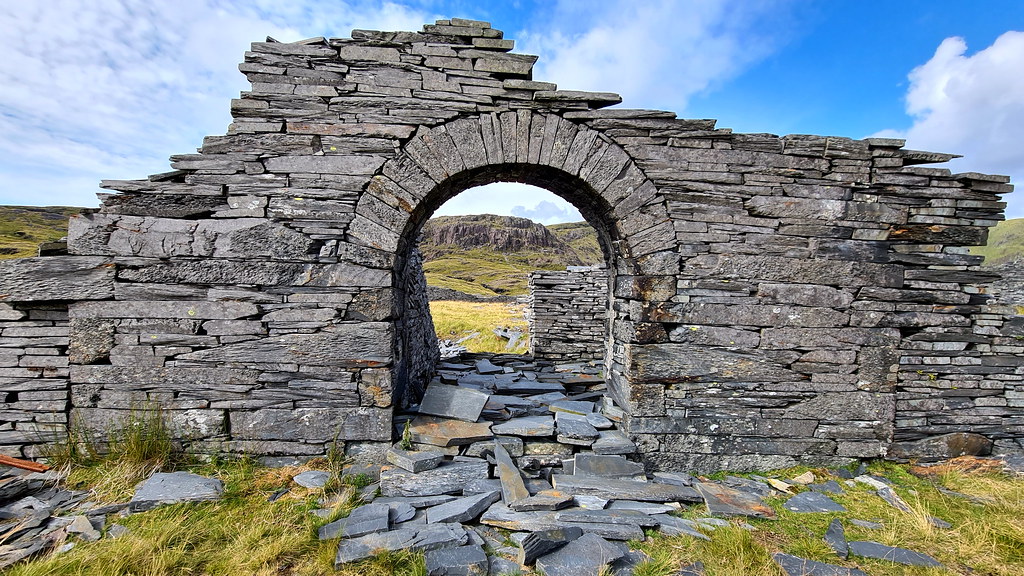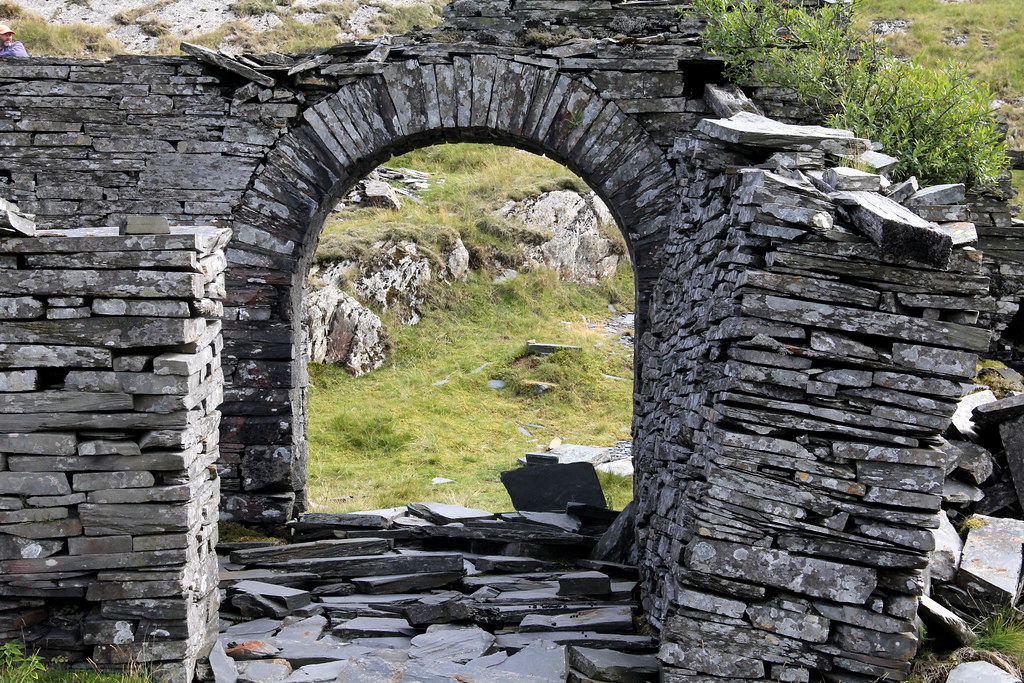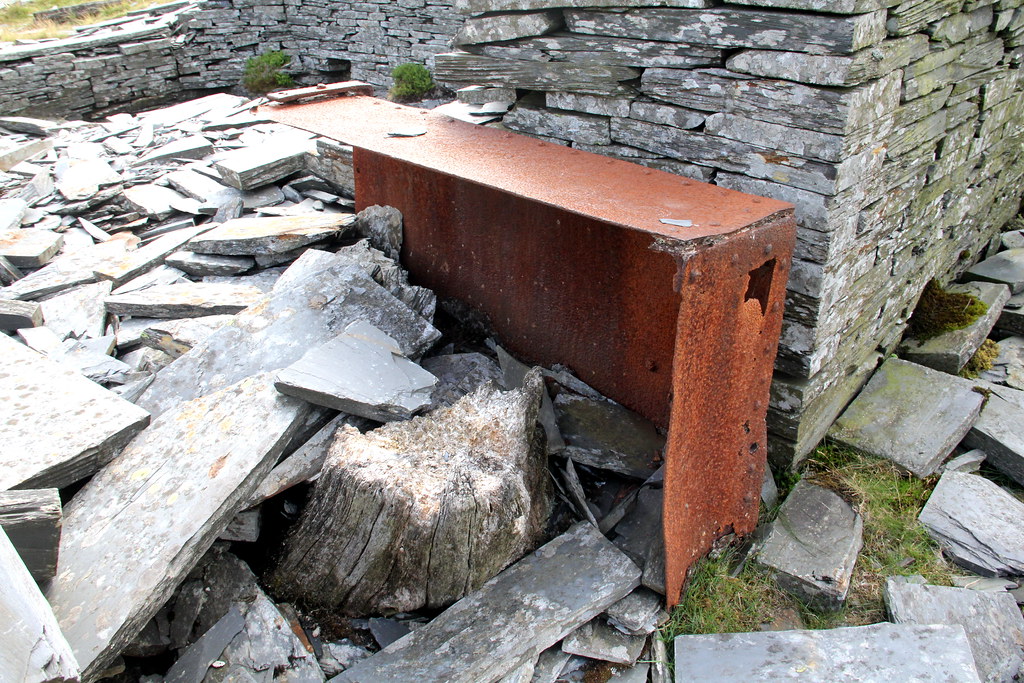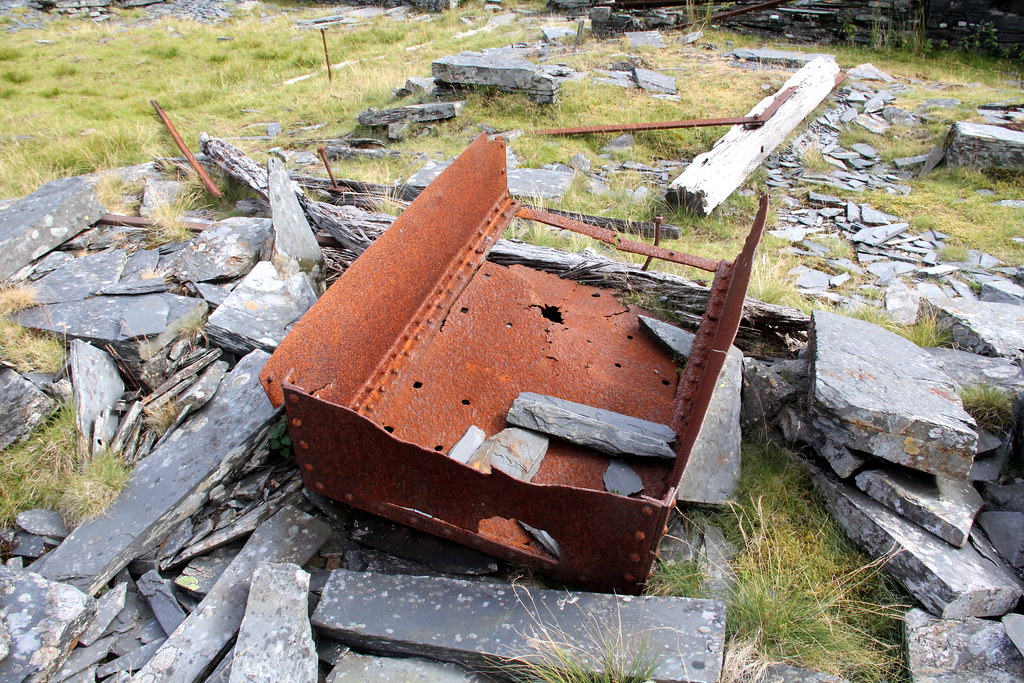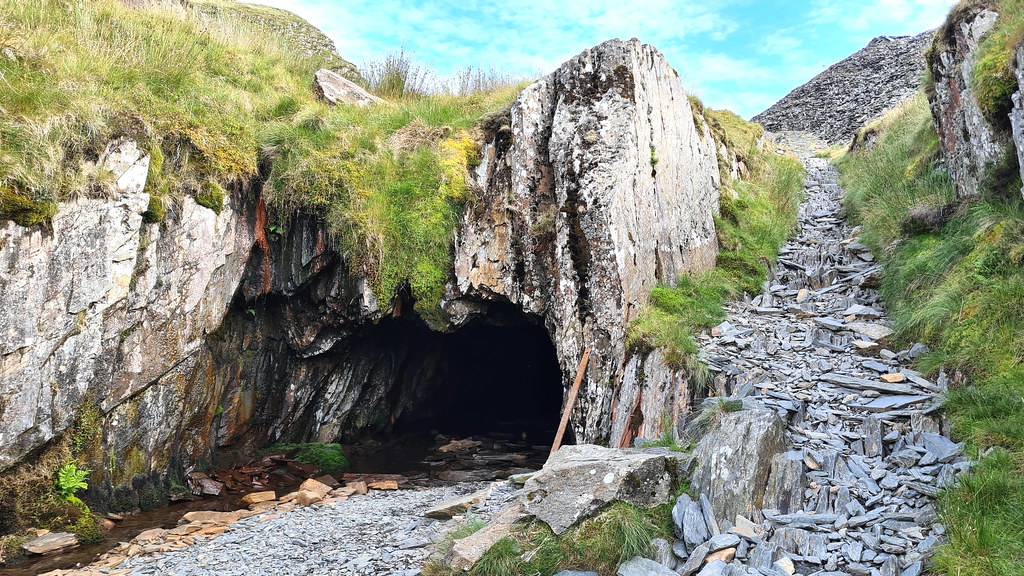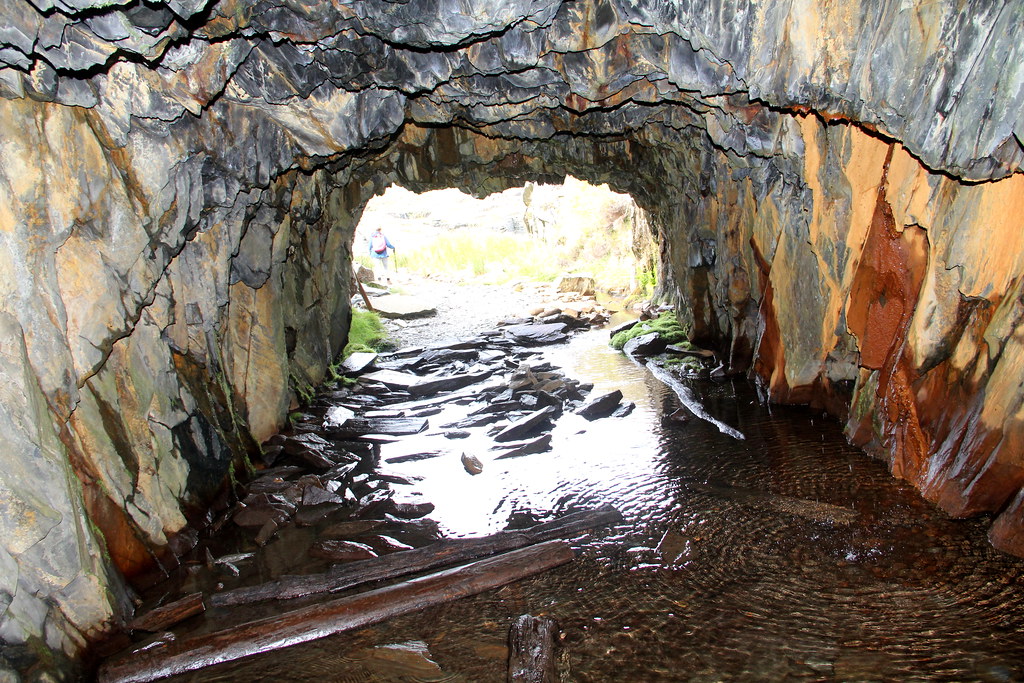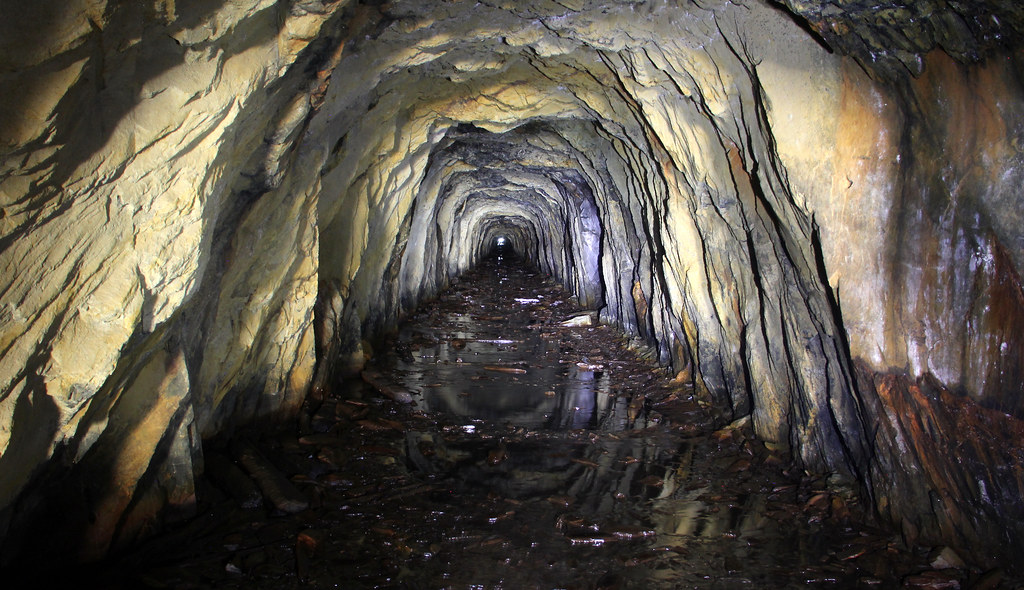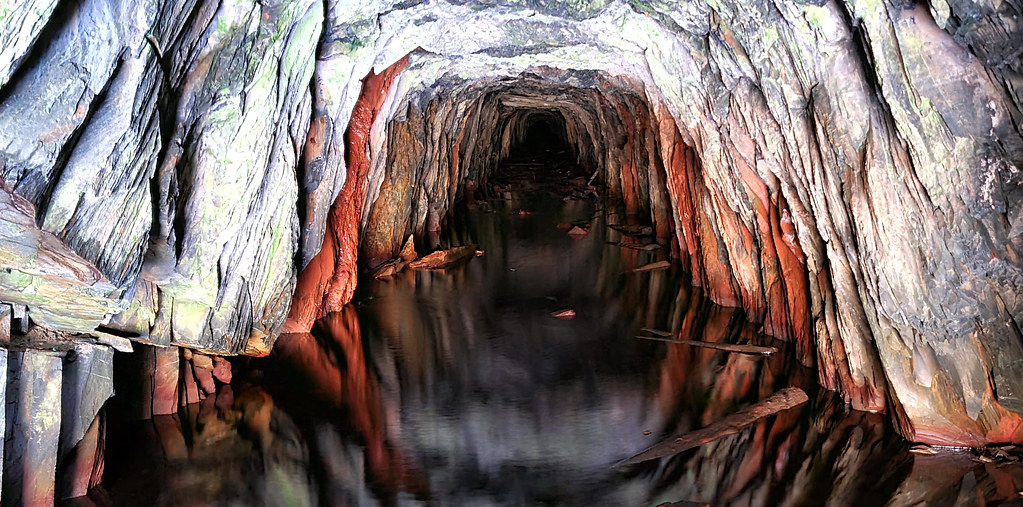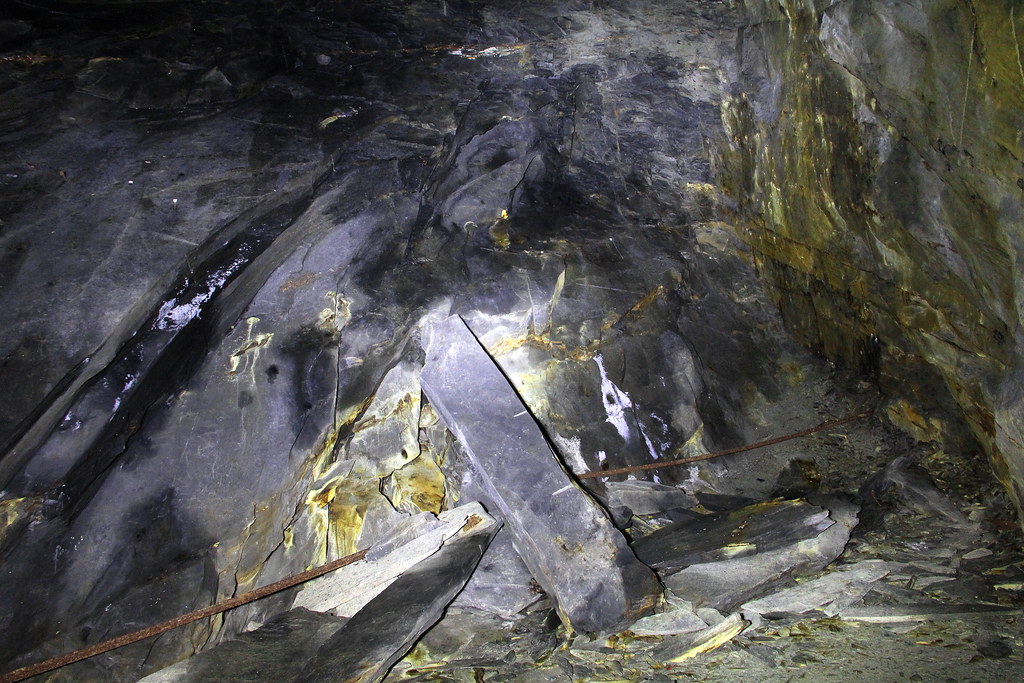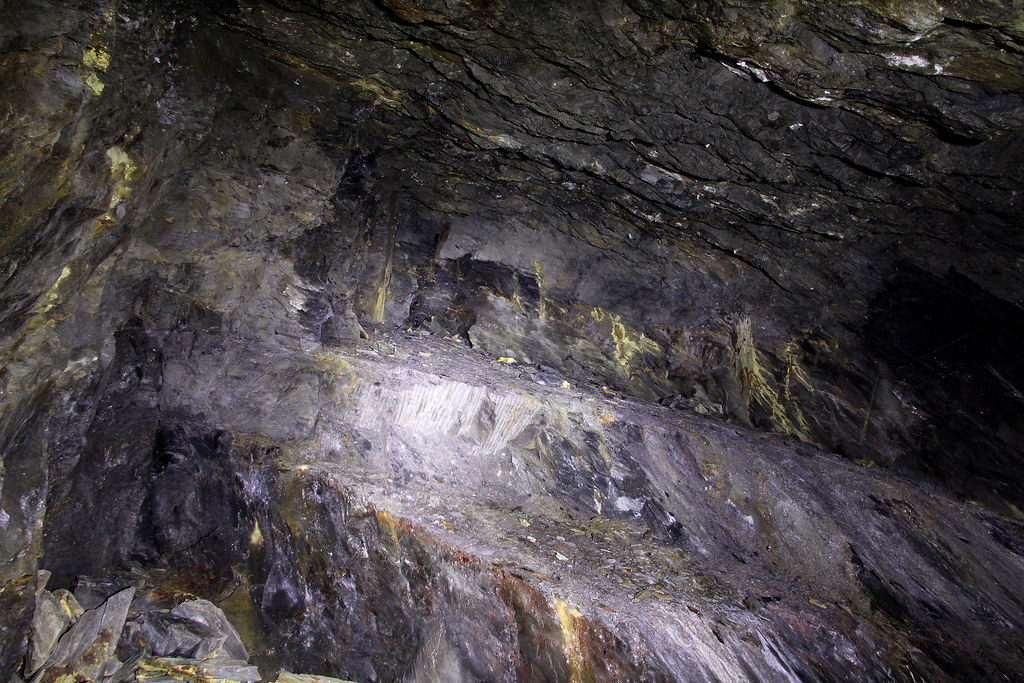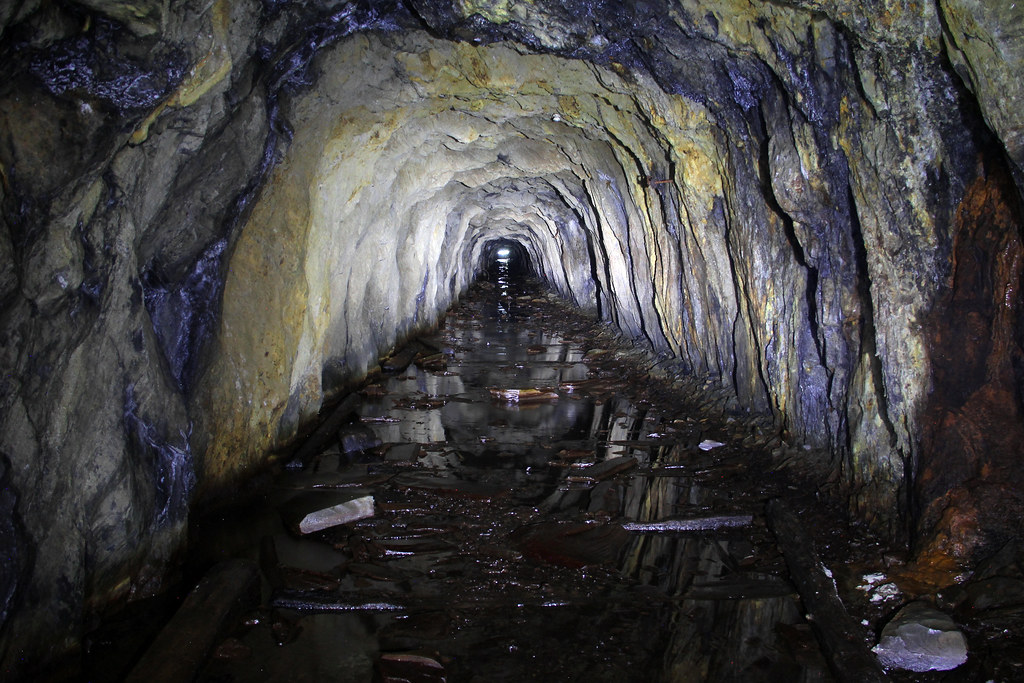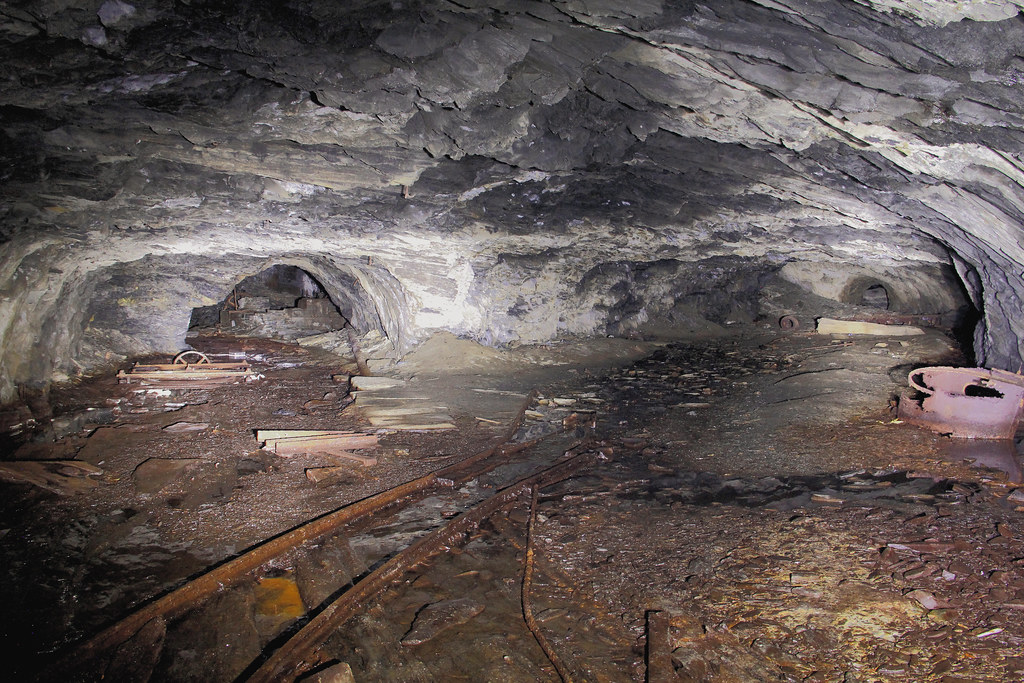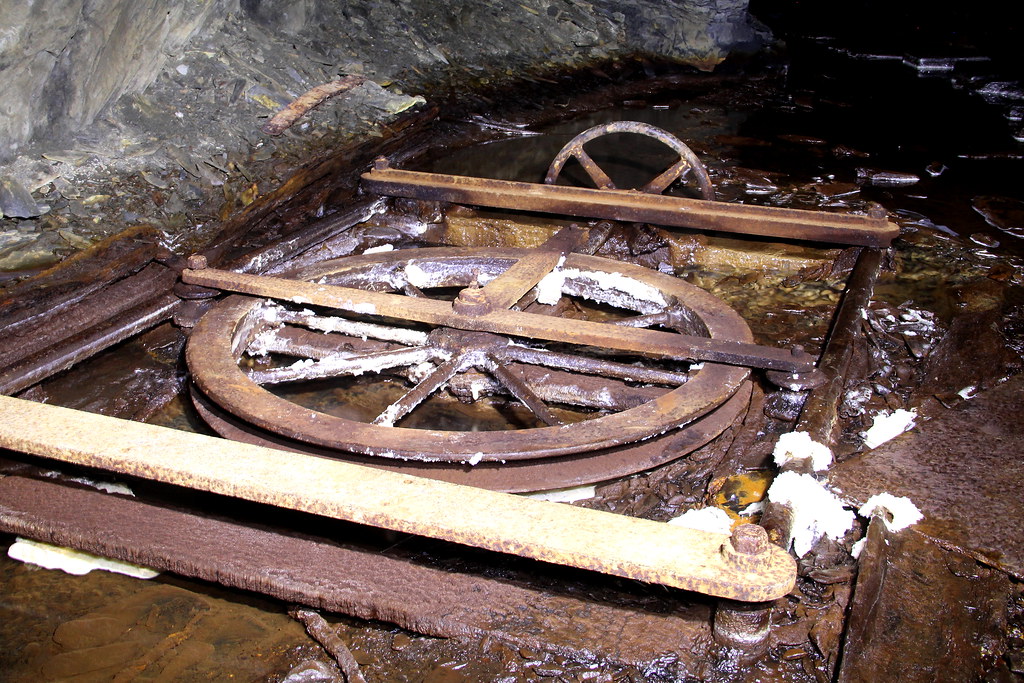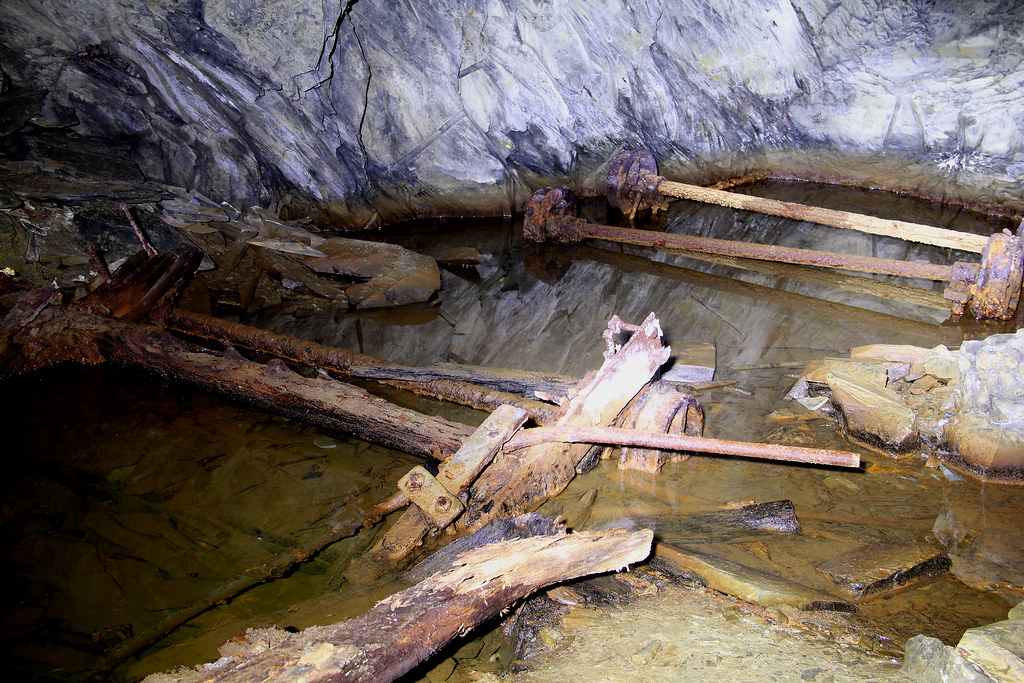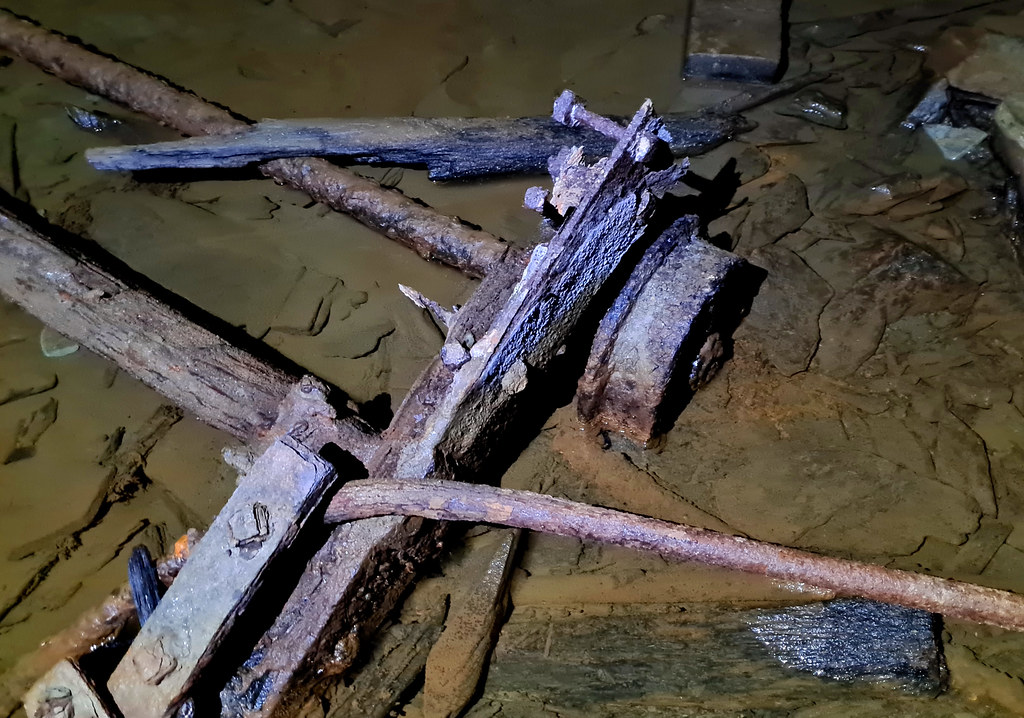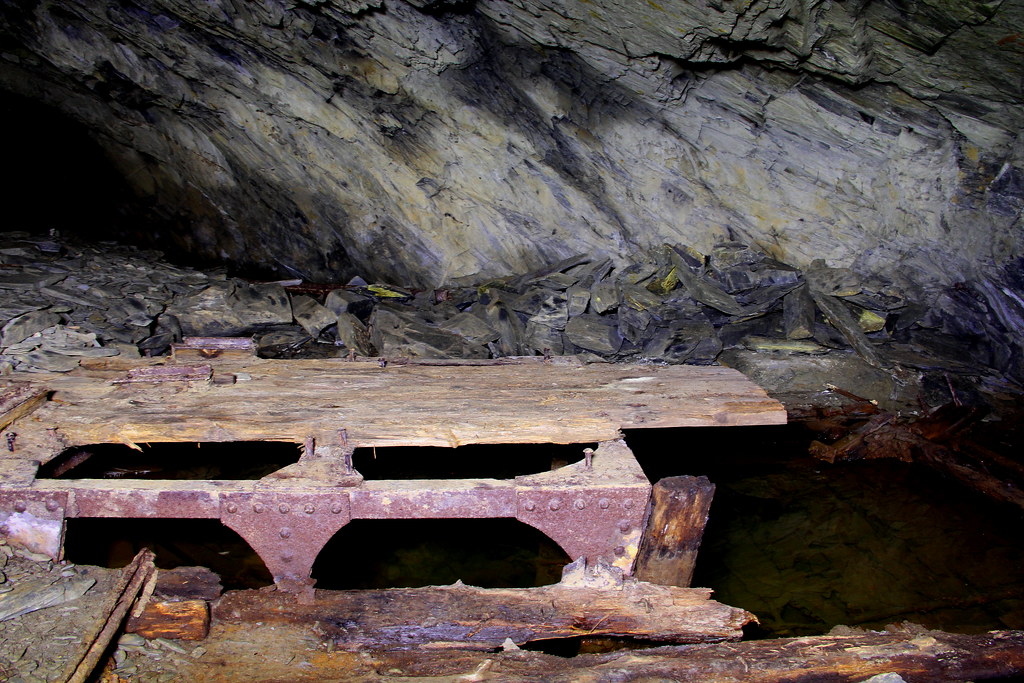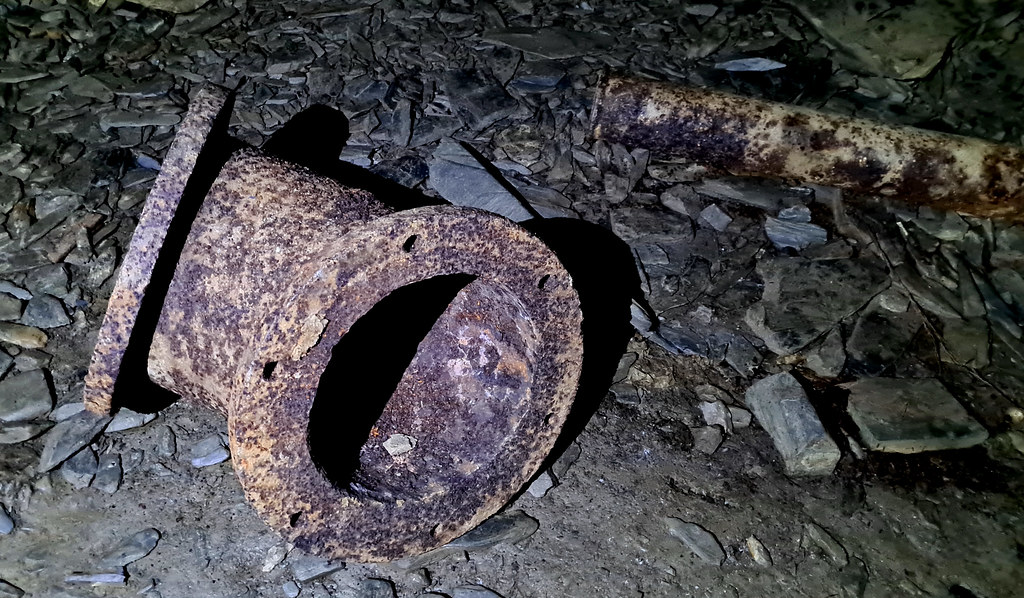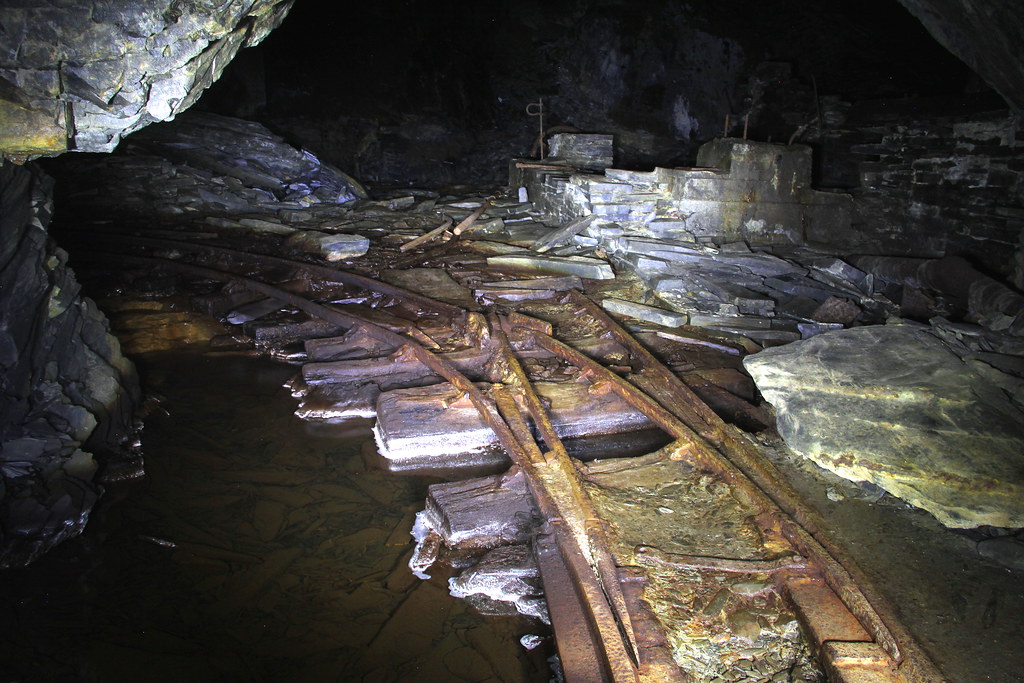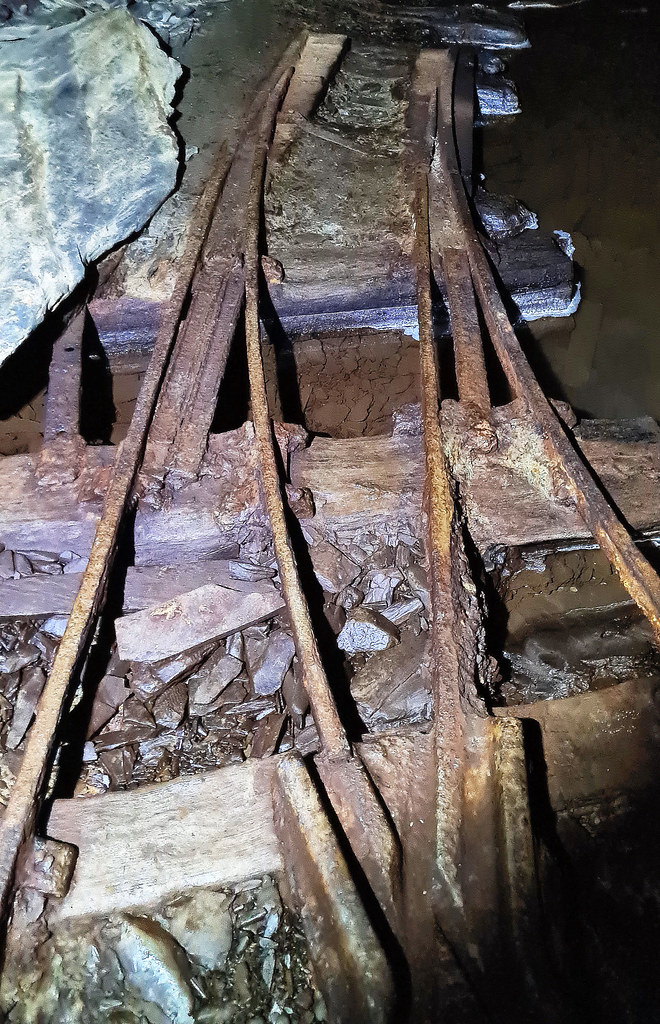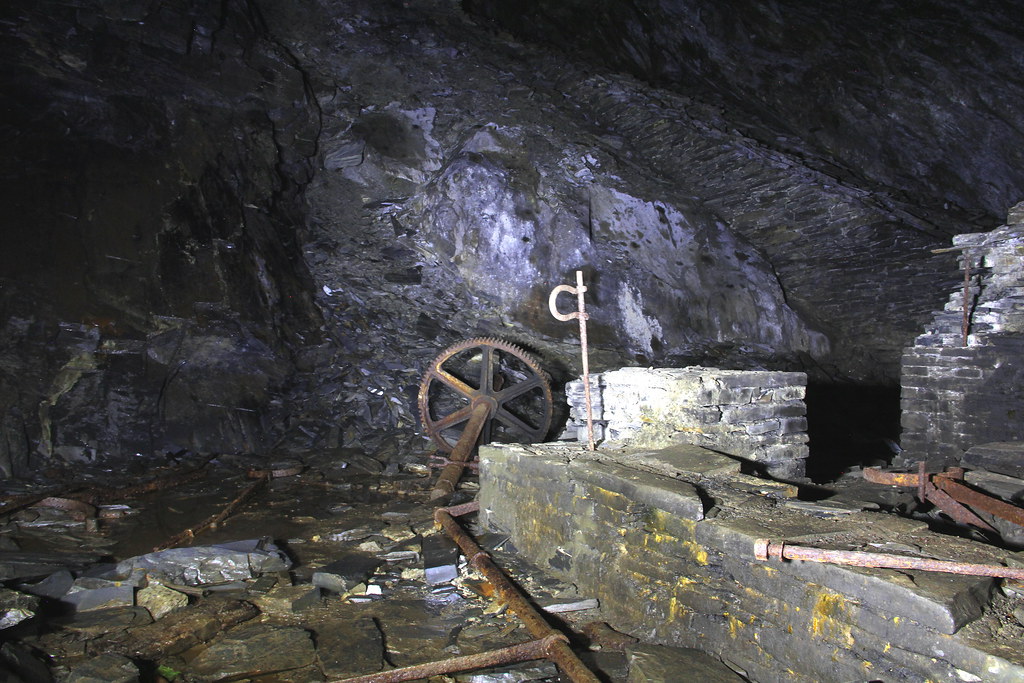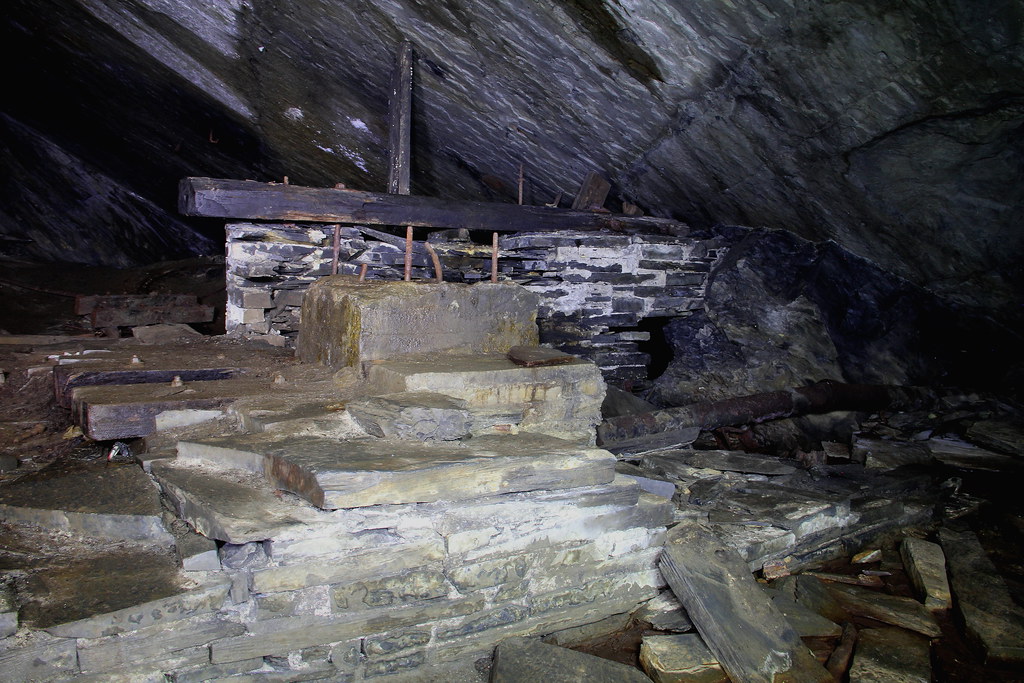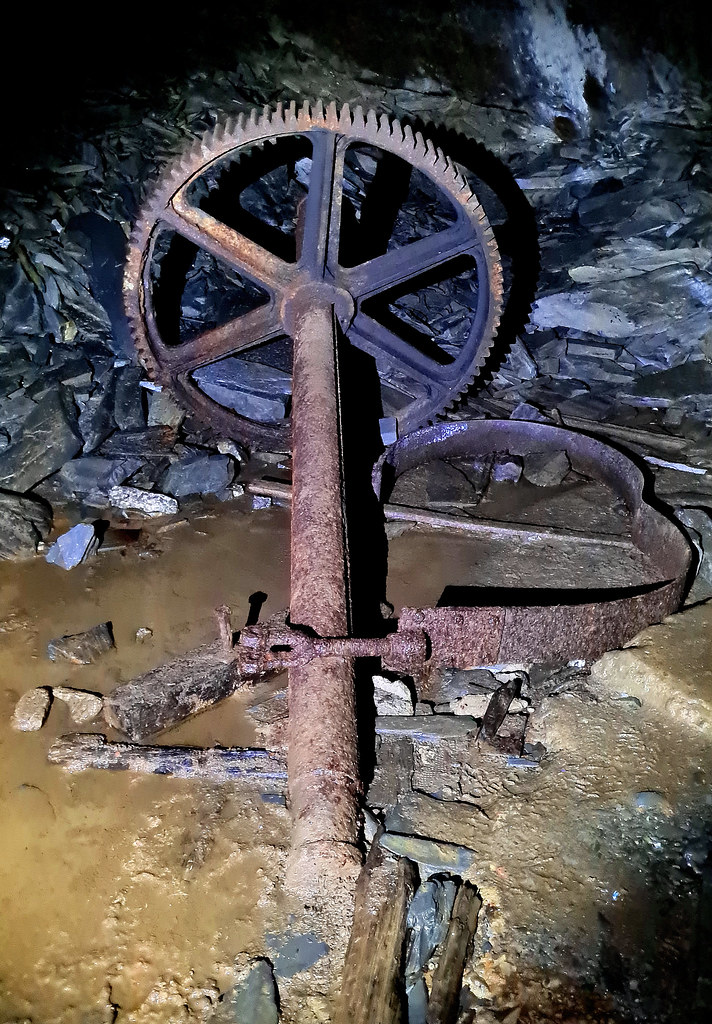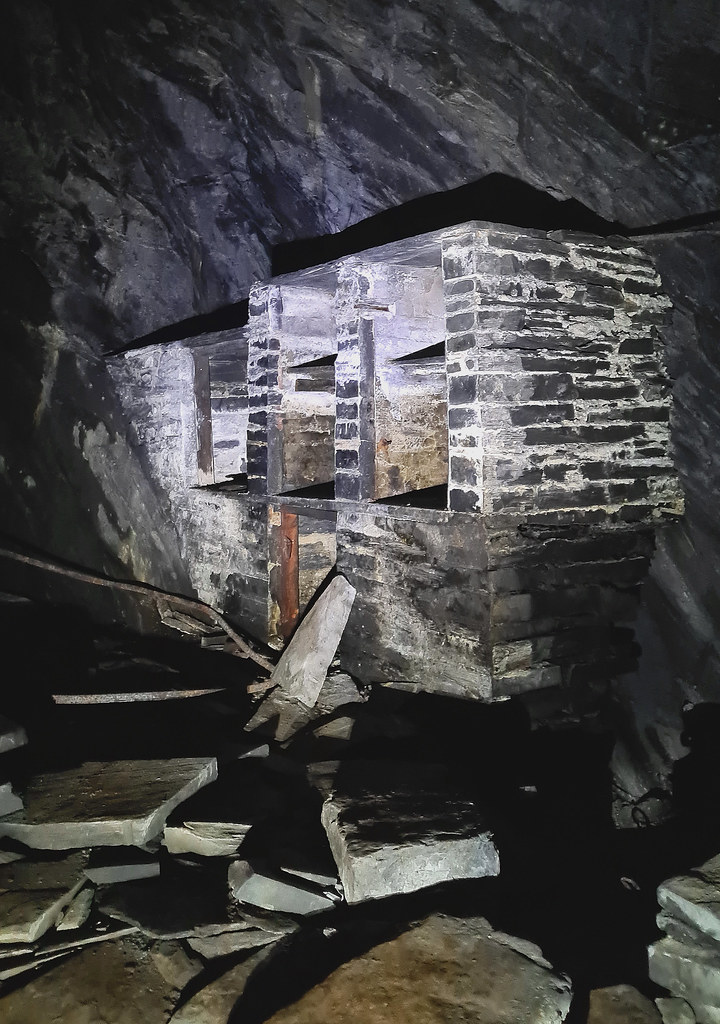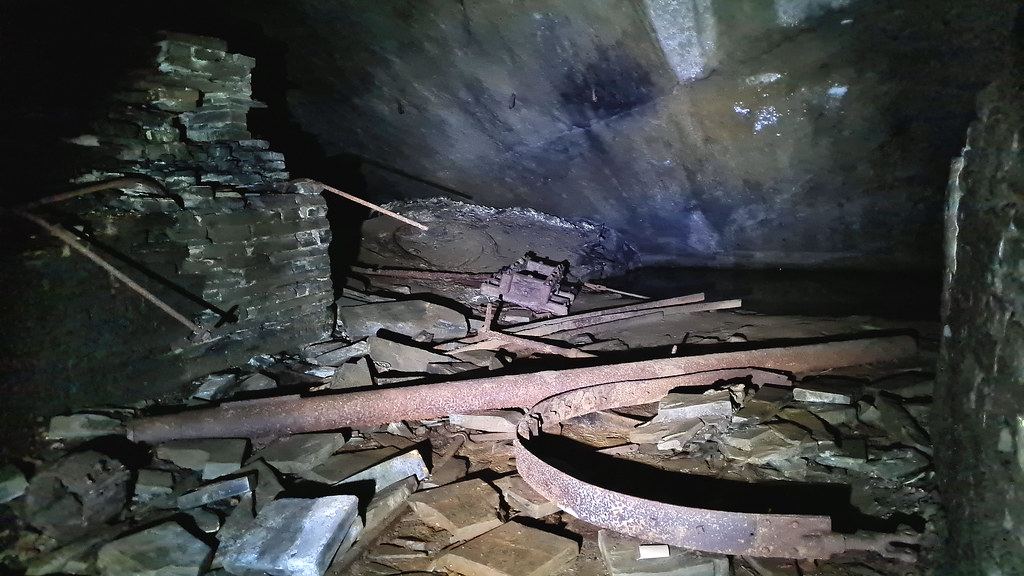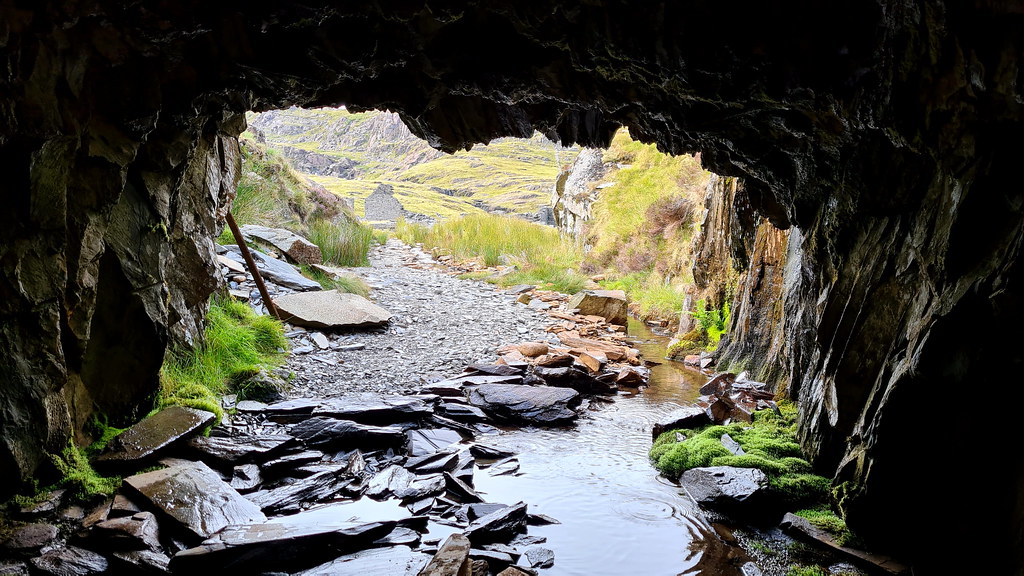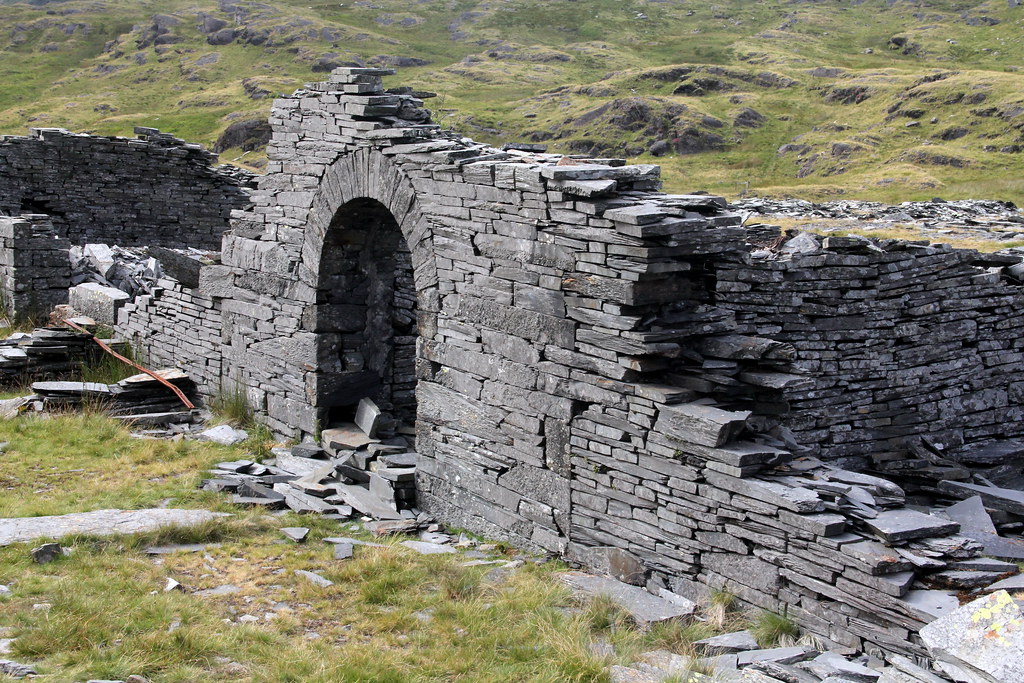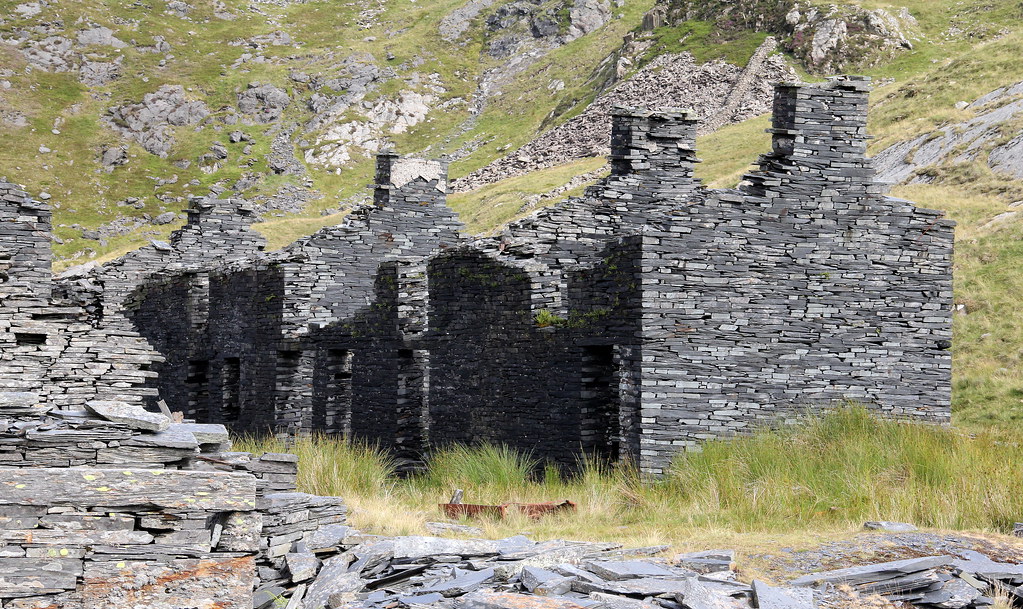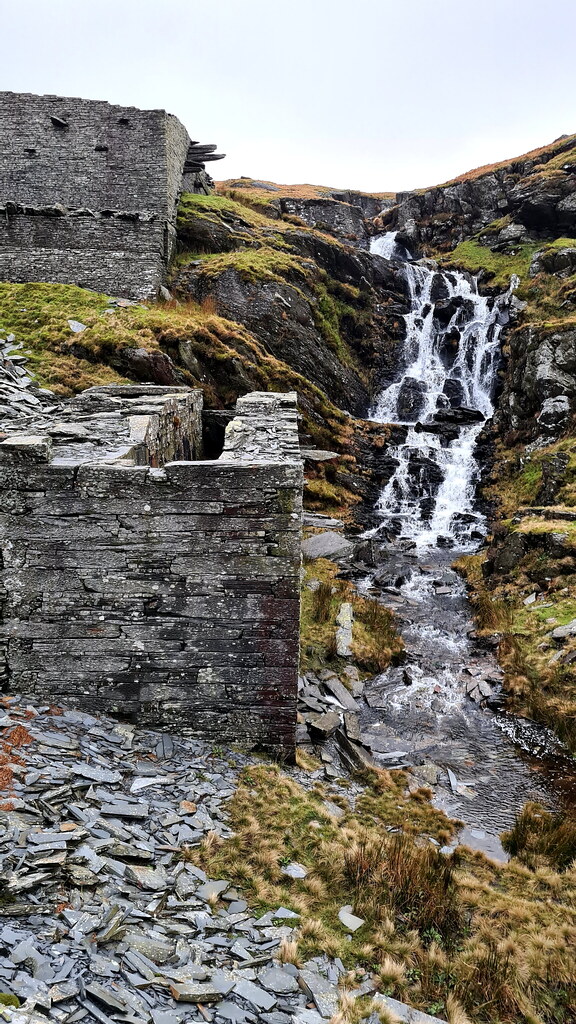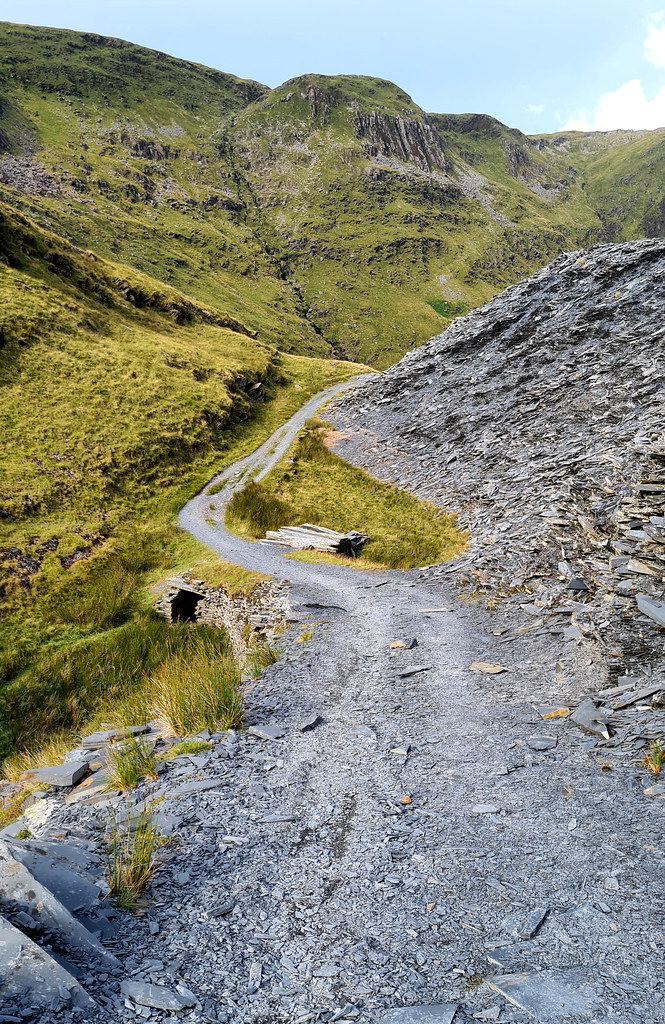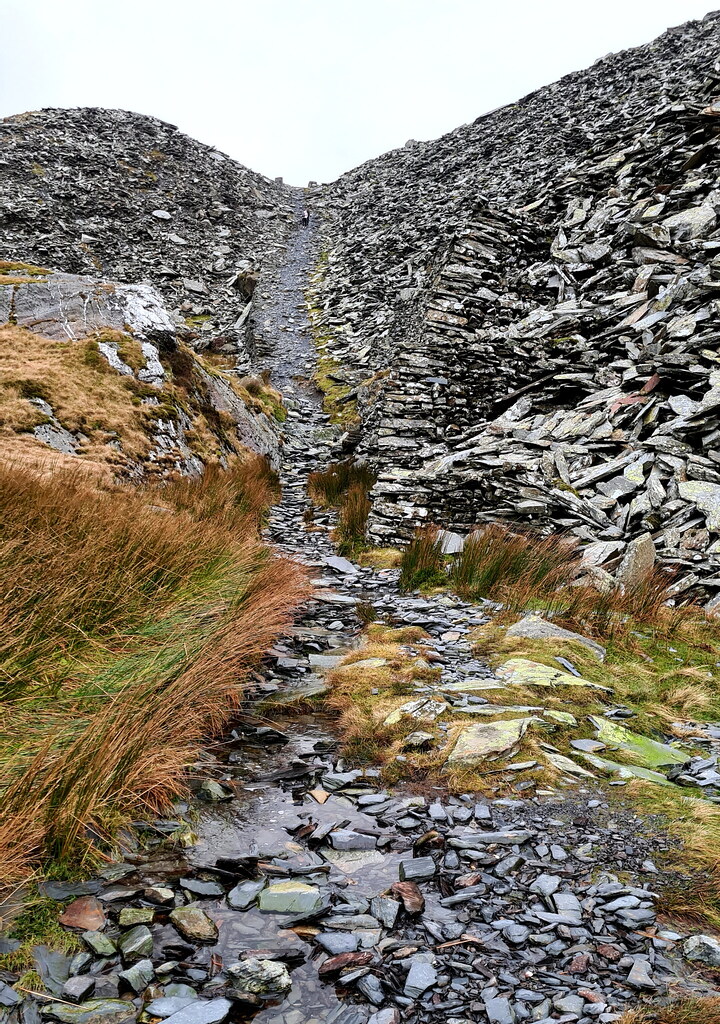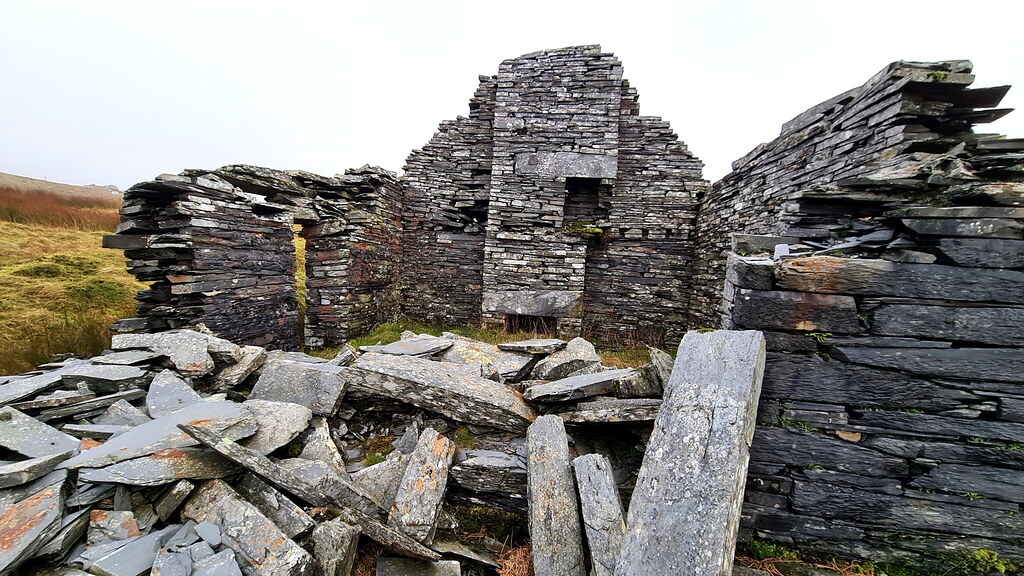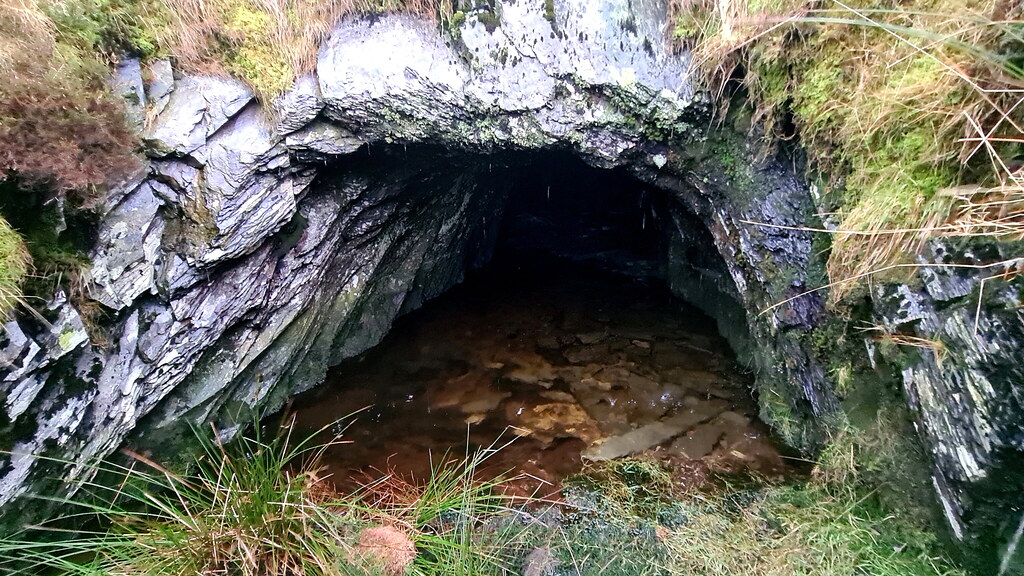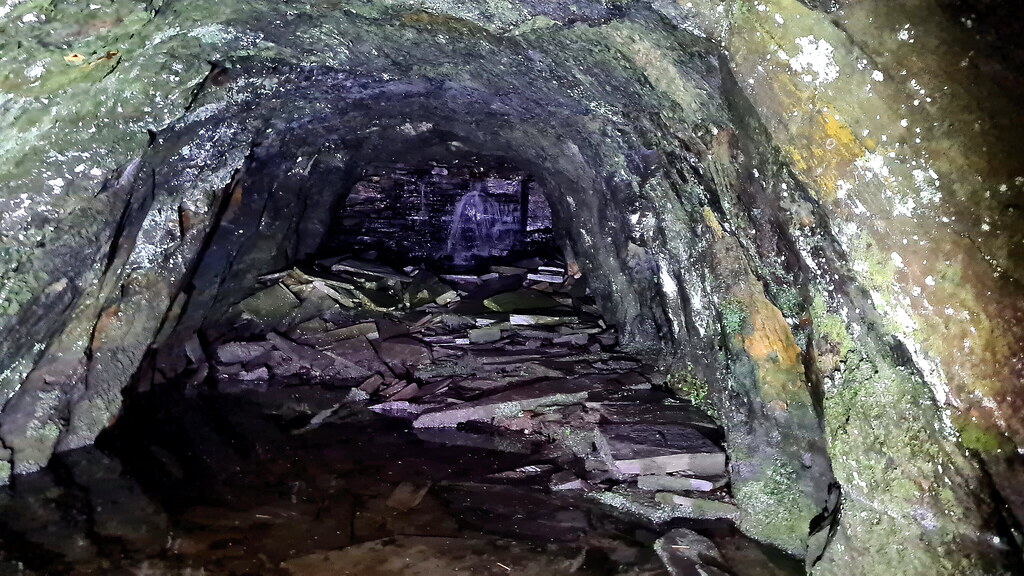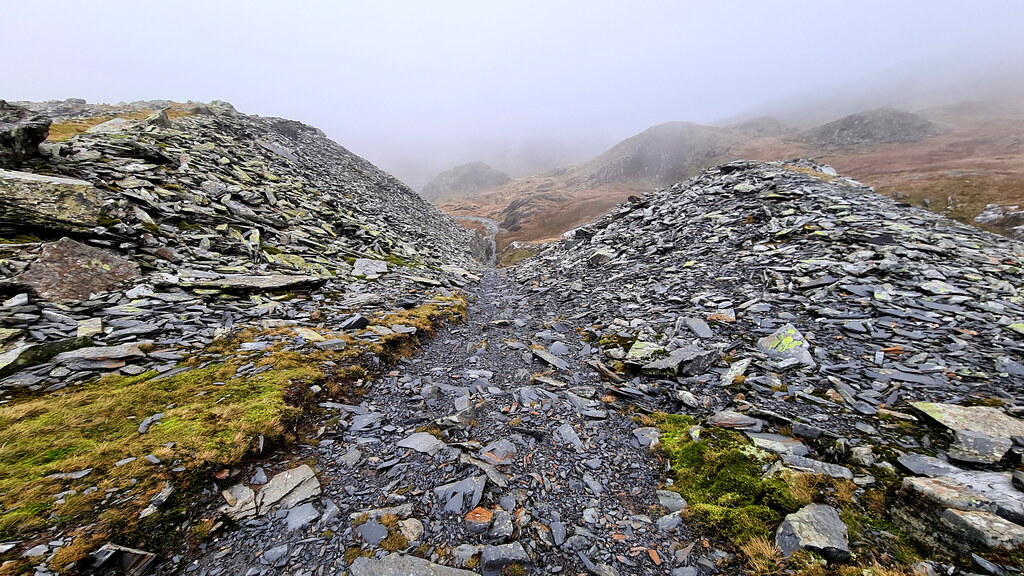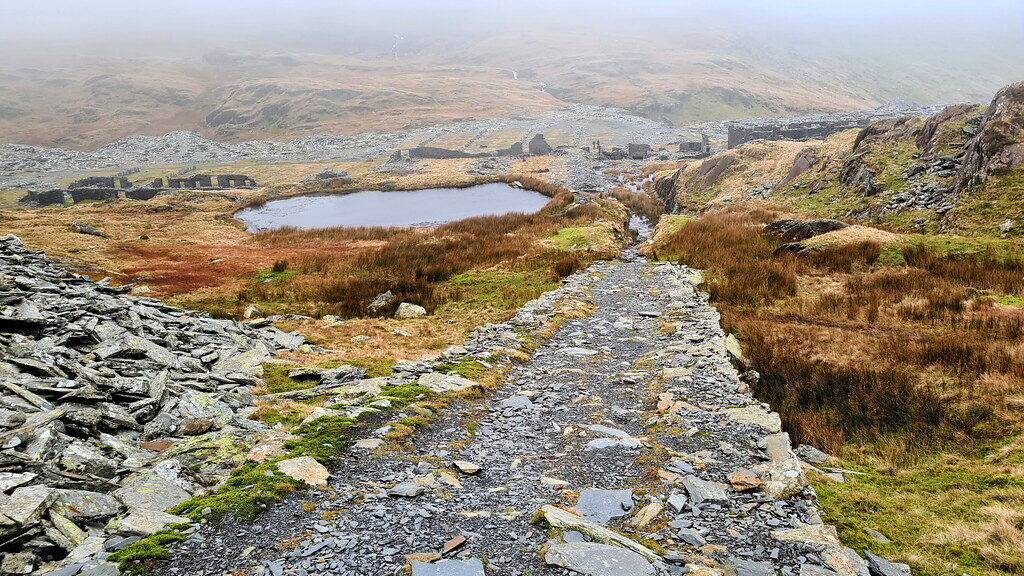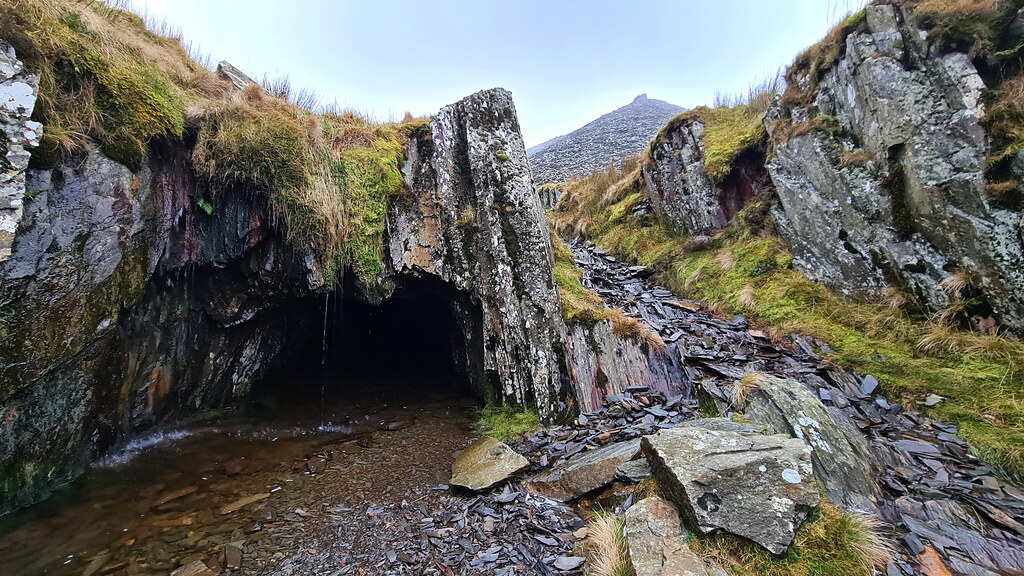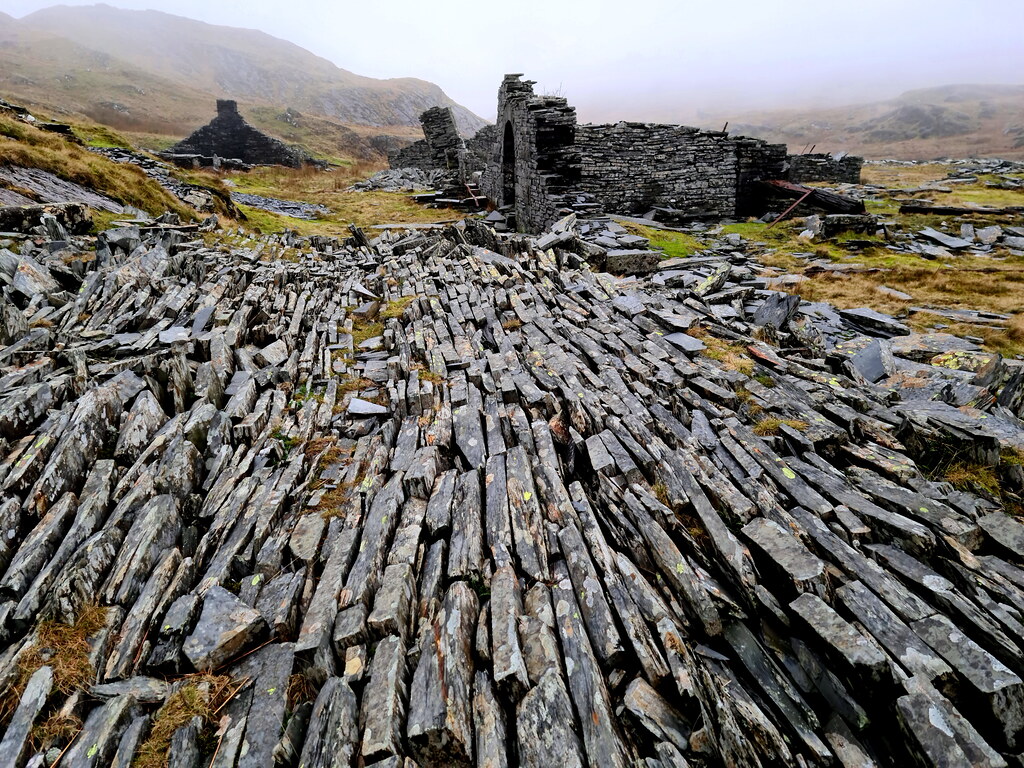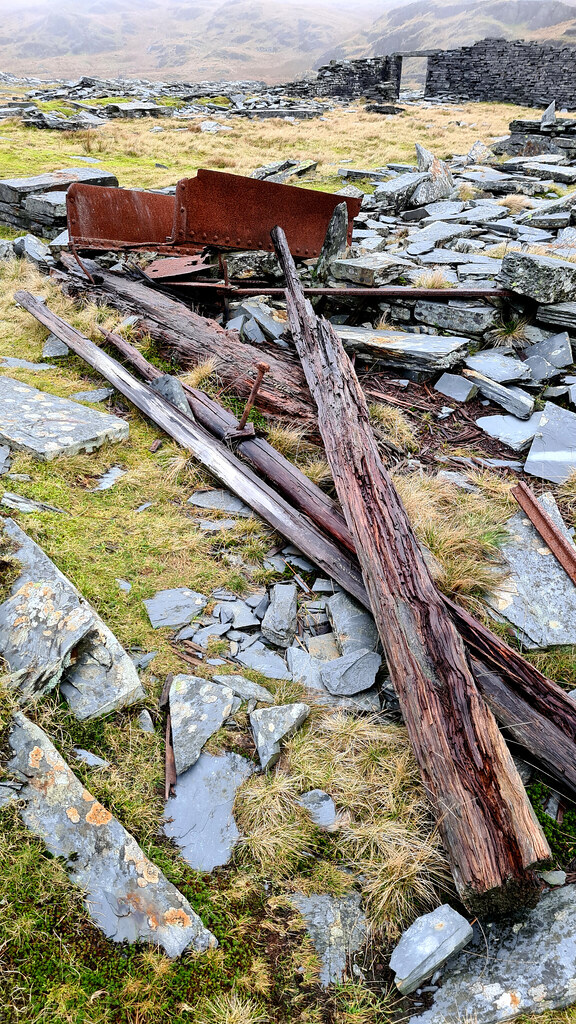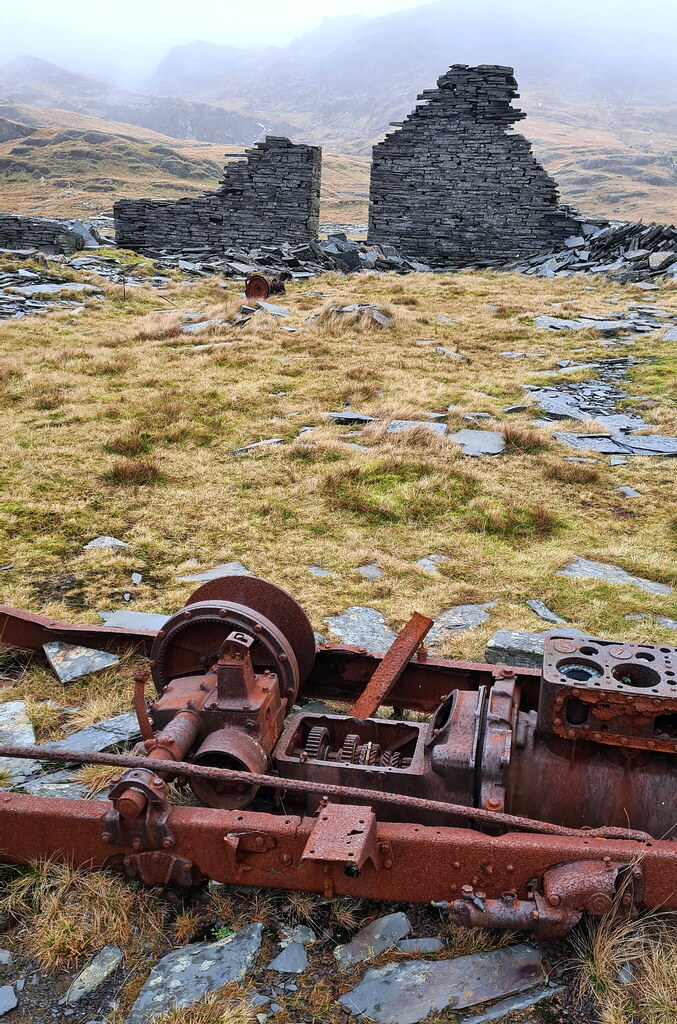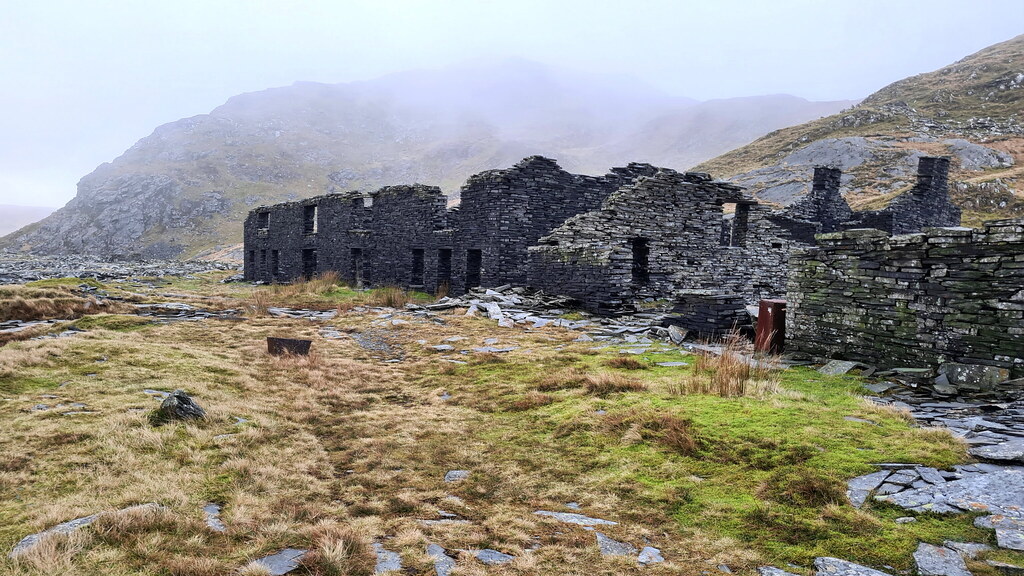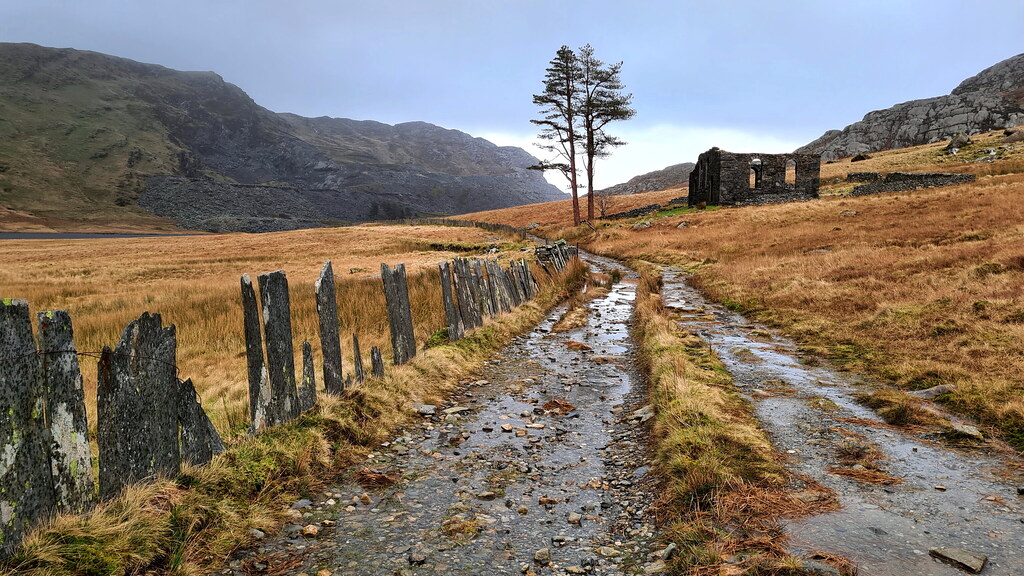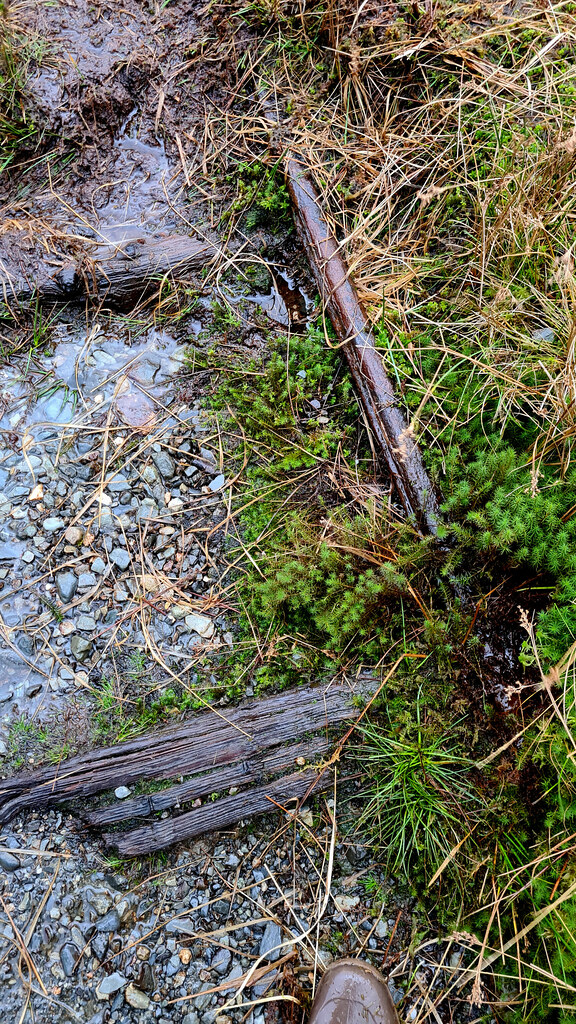- Joined
- Jan 6, 2013
- Messages
- 5,566
- Reaction score
- 11,193
1. The Rhosydd
Slate was first discovered at Rhosydd in the early 1830s by two men nearby in Croesor. Assuming it was on the estate of Croesor Fawr, they approached owner, William Turner, to request permission for them to quarry the rock. Around the same time, it was also found by Meredydd Jones of Maenofferen. He assumed that it was on the Cwmorthin Ucha estate, and approached its owner, William Ormsby Gore. Given the boundary between the two estates was ill-defined in this region, a court case in 1833 followed to define the boundary. Small scale working began when Mr Mathews from Aberystwyth obtained a lease, and created the first adit (the now collapsed adit 0) in the 1840s. In 1852, a five-way partnership was established which, in June 1853, became the Rhosydd Slate Company. It was four floors deep, with adits cut at levels 1, 2 and 4 Finished slates were transported by pack horse when quarrying began in 1854 and then onwards by the Ffestiniog Railway. Two years later, in November 1856, the company became a Ltd legal entity. The company was created with a nominal capital of £50,000, and all the shares had been issued by 1862 with most of the money coming from London.
Annotated old O/S map of the quarry showing the quarry in 1919:
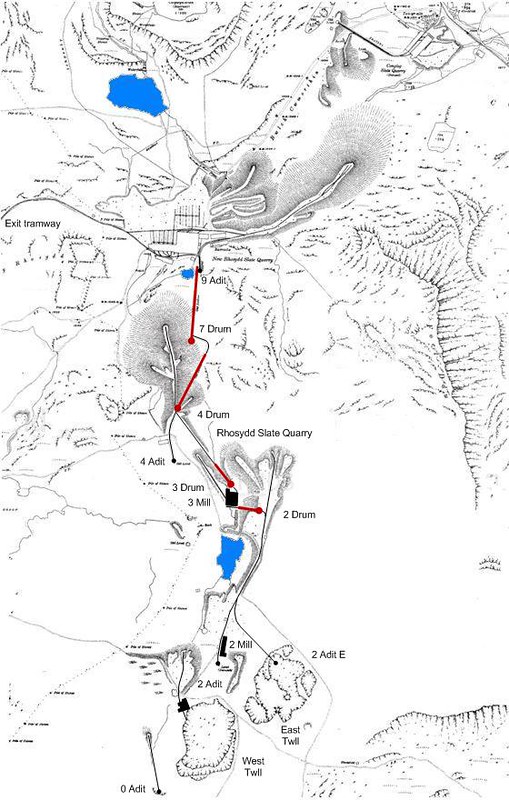
Transportation improved in 1864, with the opening of the Croesor Tramway. There were three inclines; two at Garreg Hylldrem, and one at Blaencwm. It included inclines that descended around 750 feet, which represented two of the highest single-pitch inclines in Wales. By this time, slate was being worked on five levels, and there were two adits, one of 500m and a second, the longest at 677m (adit no.9). The latter took eight years to complete. An internal incline was also built downwards from floor 5 with an average gradient of 1:2. The first four wagons descended the incline on 1st August 1864, and for the next few years, production averaged around 200 tons per month. In March 1871, the lease was renewed for a further 42 years, but with adequate returns not forthcoming, the company went into liquidation two years later, in June 1873. A year on, an auction took place in Manchester on 27th June, 1874. The quarry sold for just £29,500 and the new owners established the New Rhosydd Slate Quarry Company Ltd on 10th October, with three-quarters of the initial shares in the new company purchased by local people from Ffestiniog and the surrounding area.
The peak year for the quarry was in 1885, when 6,484 tons of finished slates were produced by the 207 men. The company was successful with good dividends paid to investors between 1876 and 1889. However, profitability declined and then in 1900, a large section of the underground workings collapsed in what was known as the "Great Fall". The huge rock fall destroyed much of the eastern workings but mining continued in the west and on Floors 11, 12 and 13. However, a new quarry was needed and as a result, new workings opened in 1906. The subsequent success of the quarry was curtailed by a slump in the slate trade prior to the First World War, and then by the war itself. The quarry was shut down in 1914 as slate quarrying was deemed to be a "non-essential industry", although two men were retained to maintain it. It reopened after the war, in 1919, but with the company’s finances in a poor state, the company went into voluntary liquidation in July 1921. It was then sold for £23,798 to two members of the Colman family, better known for producing Colman's mustard. Struggling to find markets for their product, Rhosydd closed on September 1930. Again, two caretakers were retained, and the pumps continued to operate, in the hope that it could be reopened.
In December 1947, Captain John S Matthews bought the quarry, together with the Croesor and Conglog quarries, with a view to reopening all three. Sadly his plans went awry, and the pumps were finally turned off in 1948 and the equipment removed for scrap. During its operations, around 222,000 tons of slate were produced, and with the waste tips containing some 2.5 million tons of rock, the yield was approximately 1 ton of slate to 10 tons of wastage. The quarry was purchased by McAlpine in the 1990s, but quarrying was not resumed. Since then it has remained an impressive reminder of this once great industry that dominated North Wales.
2. The Explore
One of my favourite places I went to. It’s remote and a good hour’s walk up here so the place has a real atmosphere to it. Visiting twice, both via detours from a family walk, so time was at a premium. The first visit in July 2021 was more fruitful with the second in January 2022 more brief and in very contrasting weather. It’s quite a hike up from the car-park nearby to Tanygrisiau but the path along the former route of the Croesaur Tramway past Cwmorthin mine and along the western banks of the Cwmorthin Lake is rather wonderful. At the end of the lake the path then heads north-west past the much smaller Conglog slate mine as the vast slate tips of Rhosydd loom up to the left.
After a final steep hike upwards you get to the really impressive northern surface remains. You can quite easily spend half an hour or so here. It’s then five minutes southwards to the legendary adit no.9. It’s a really impressive drive and very straight. In summer the water was well below welly level so I headed down it. Bizarrely, in the distance I could see distant lights which got closer to me. It turned out to be a family of five who were doing the (legendary) Croesor-Rhosydd through trip. Having hit the workings I took some pictures before having to head out to catch the fam up as they trekked back down the path to the car.
The second visit I hoped to go back down the adit but this time (not-unexpectedly) the adit was nearly over welly height and progress was slow, so I gave up as a bad job. Heading further south up the track I came to the now blocked adit no.4 and with the weather closing in, headed back. Hence a revisit here in the future is definitely on the cards.
3. The Pictures
First visit:
First thing of significance are these old miners houses on the edge of Cmworthin Lake:
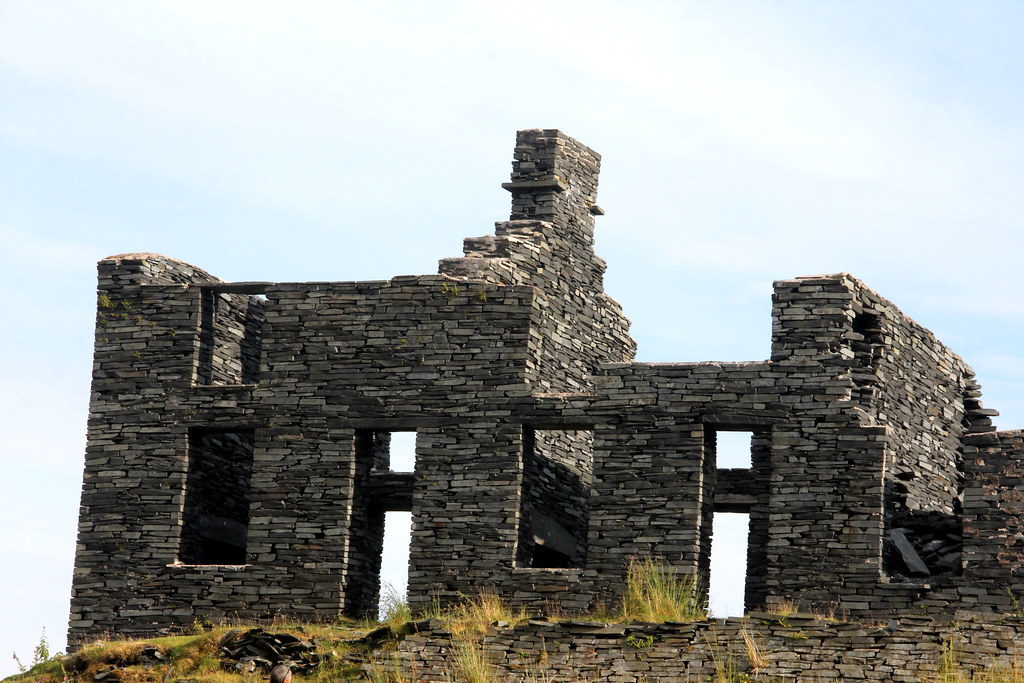
Looking over towards Cwmorthin mine:
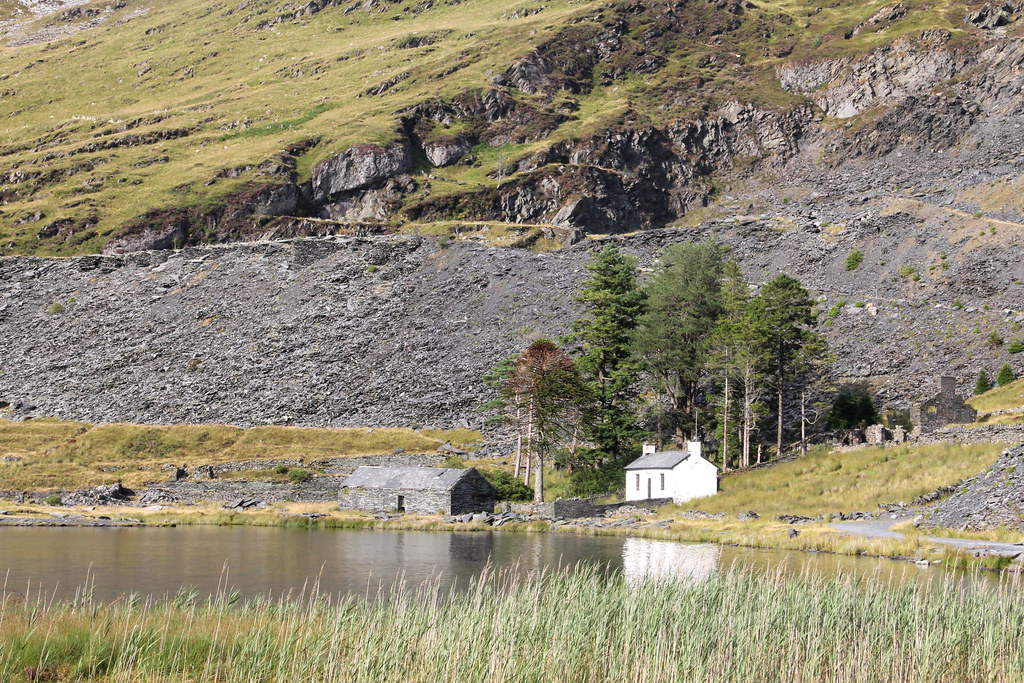
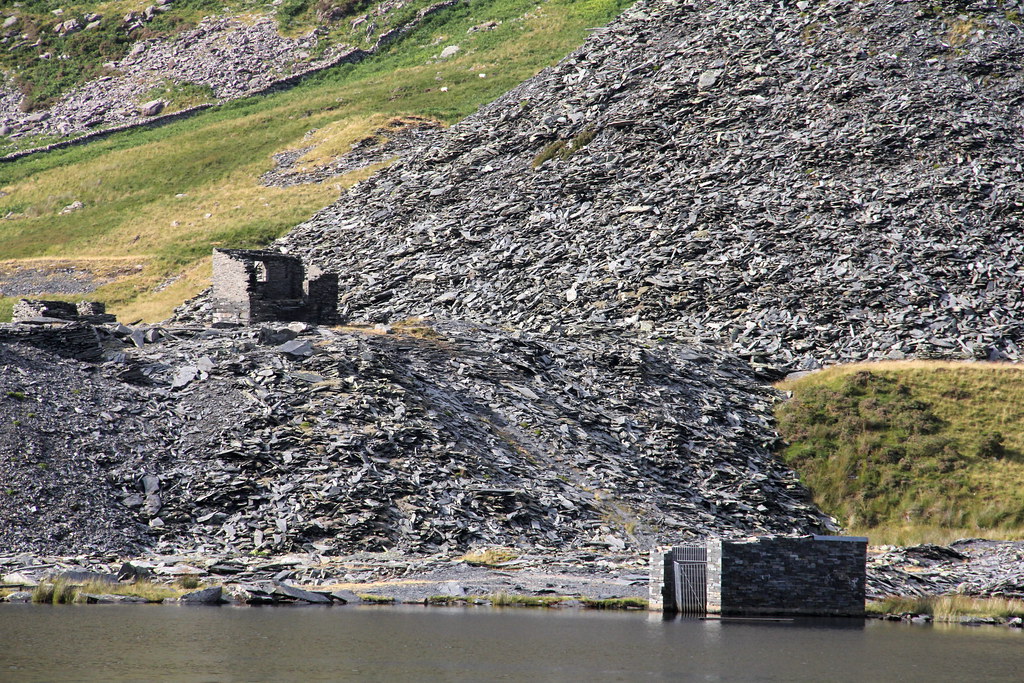
The Rhosydd quarrymaster’s house:
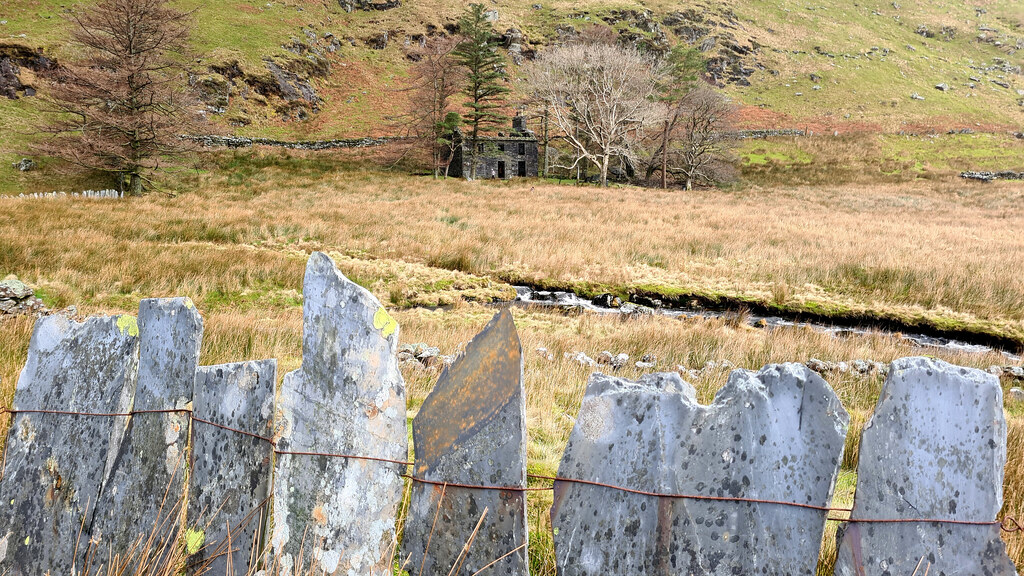
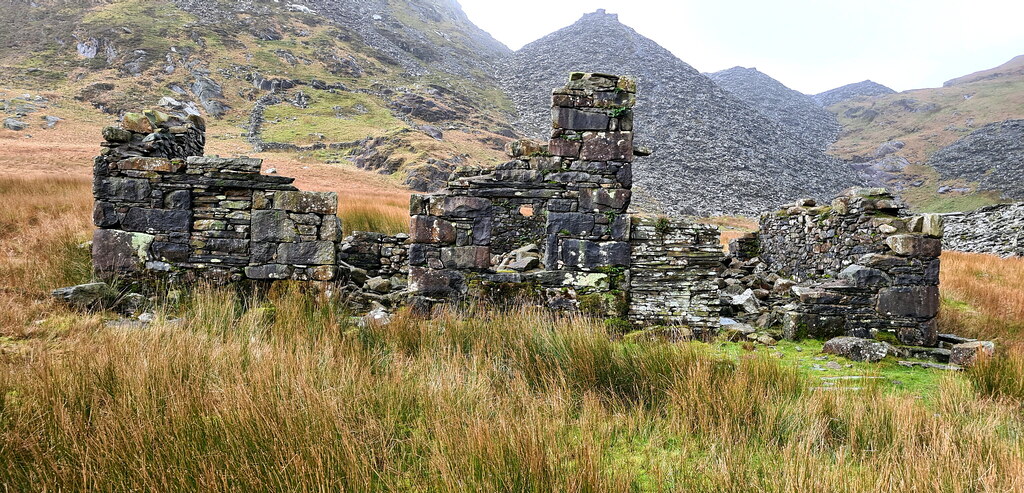
Buildings of Conglog mine:
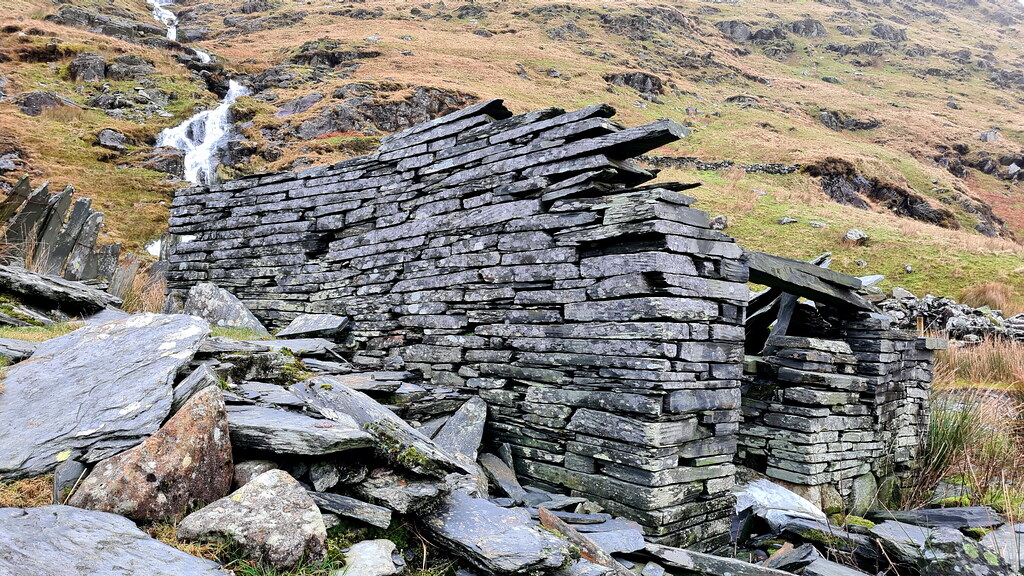
And one of its remaining adits:
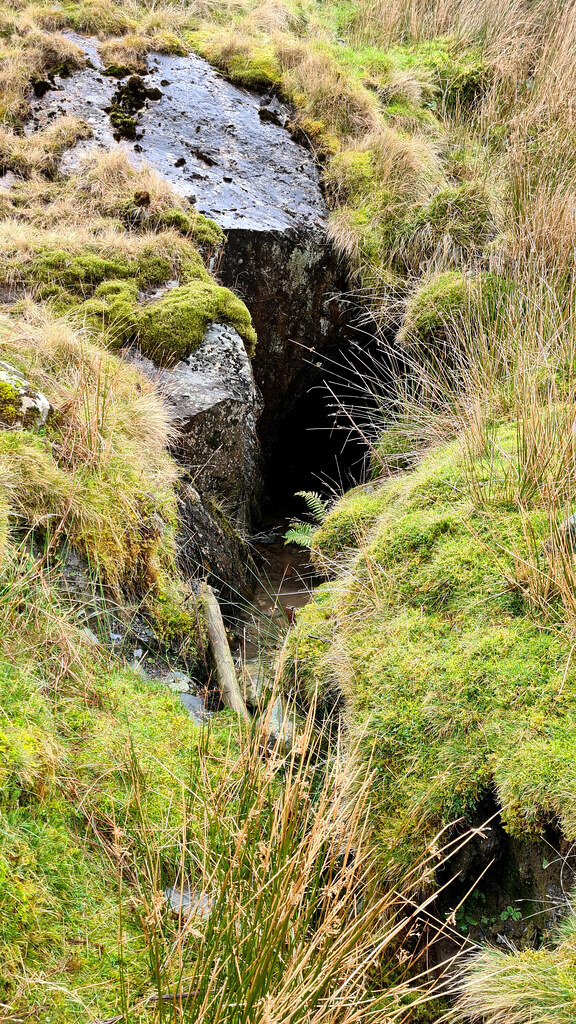
Up we go:
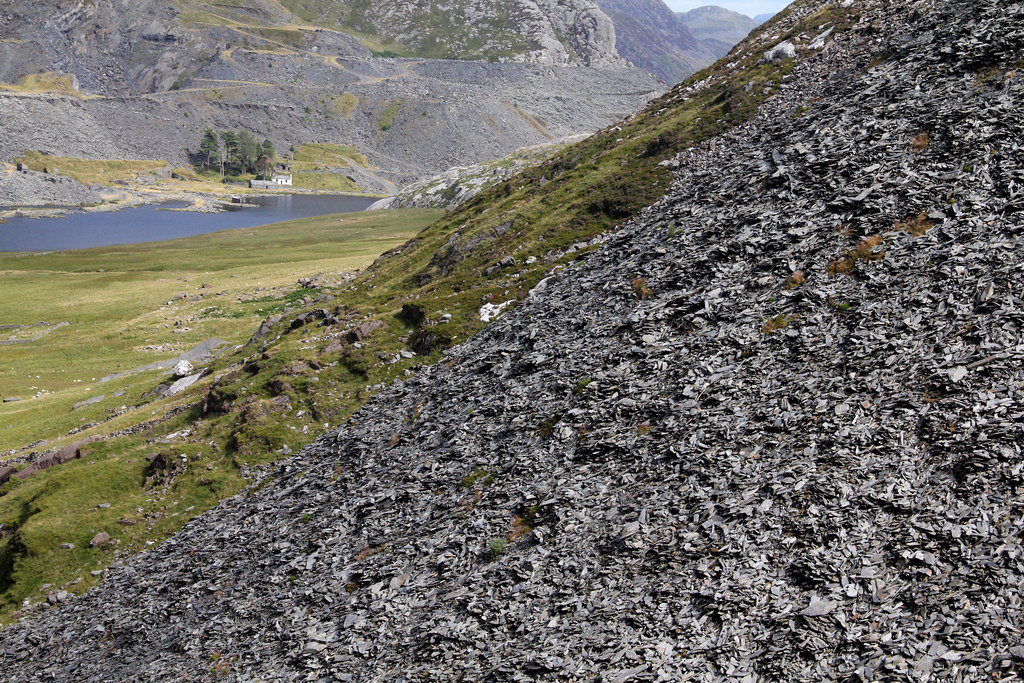
So much slate waste:
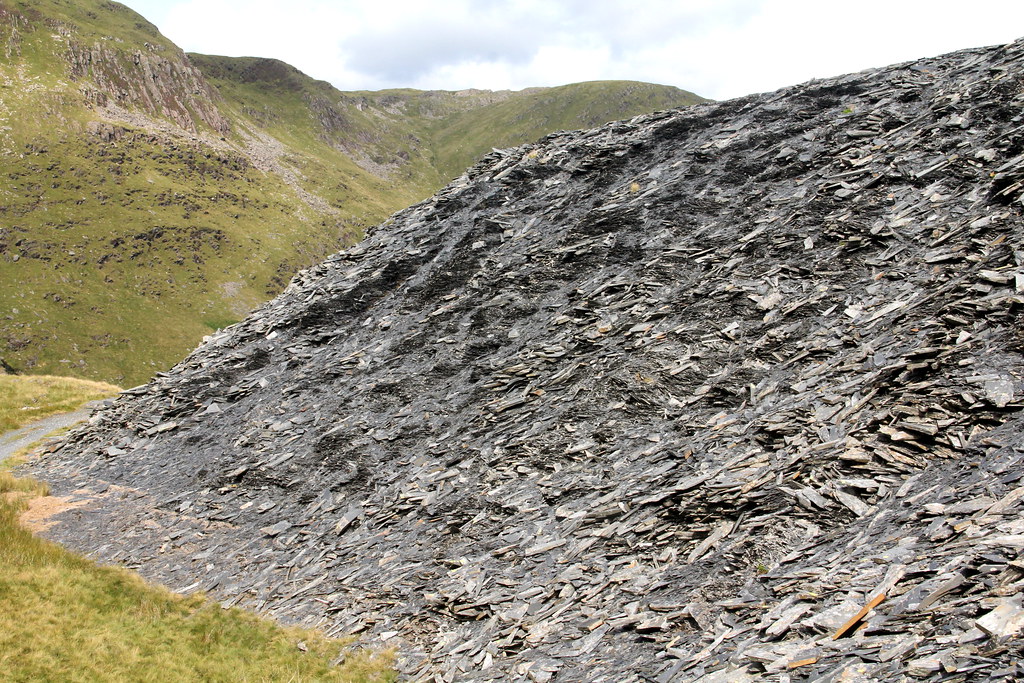
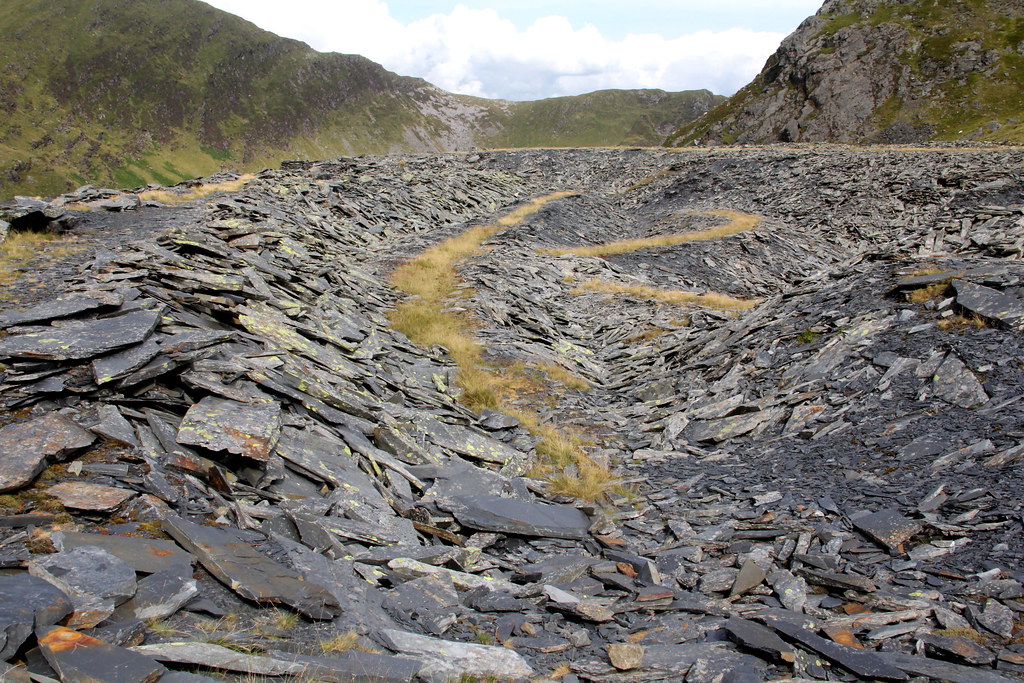
Nearly there:
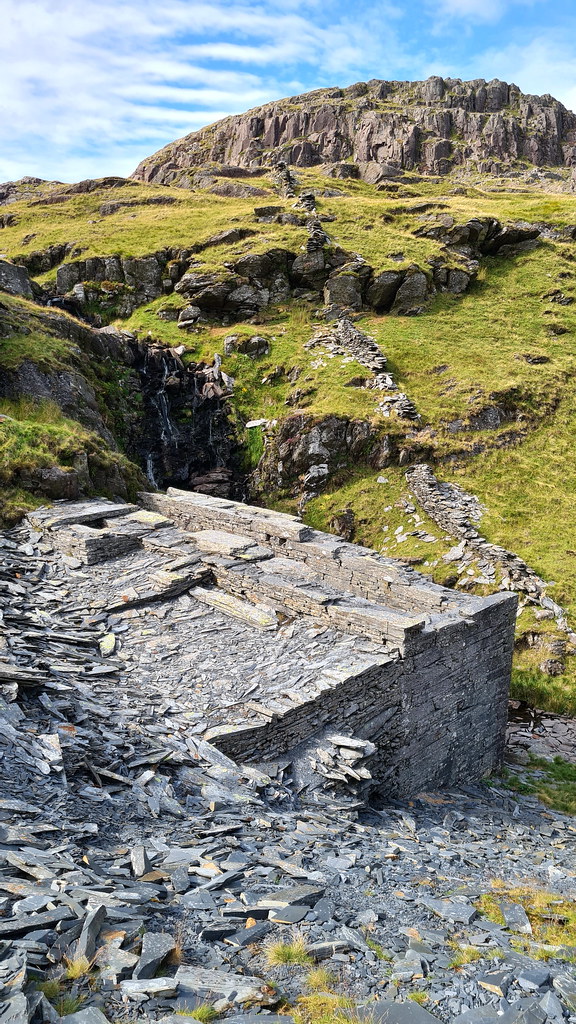
This was an old water-wheel housing:
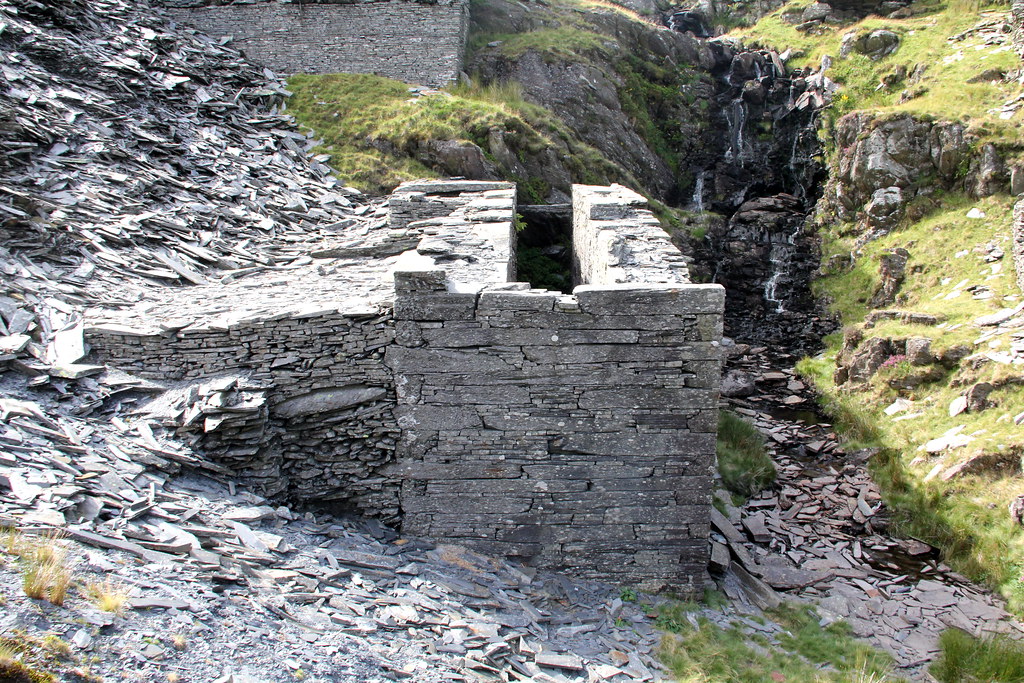
Looking across to the barracks:
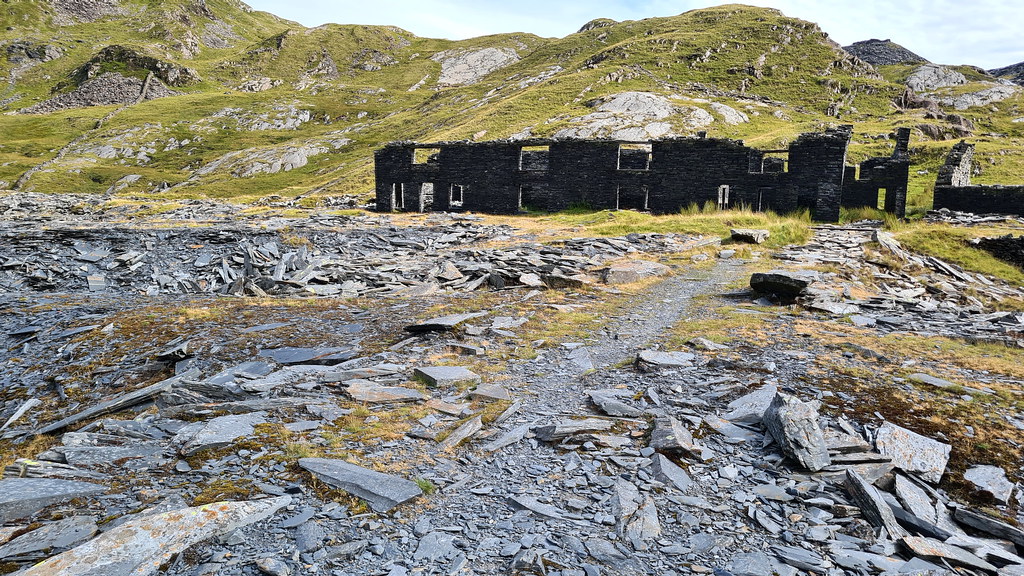
Stacked full of slates:
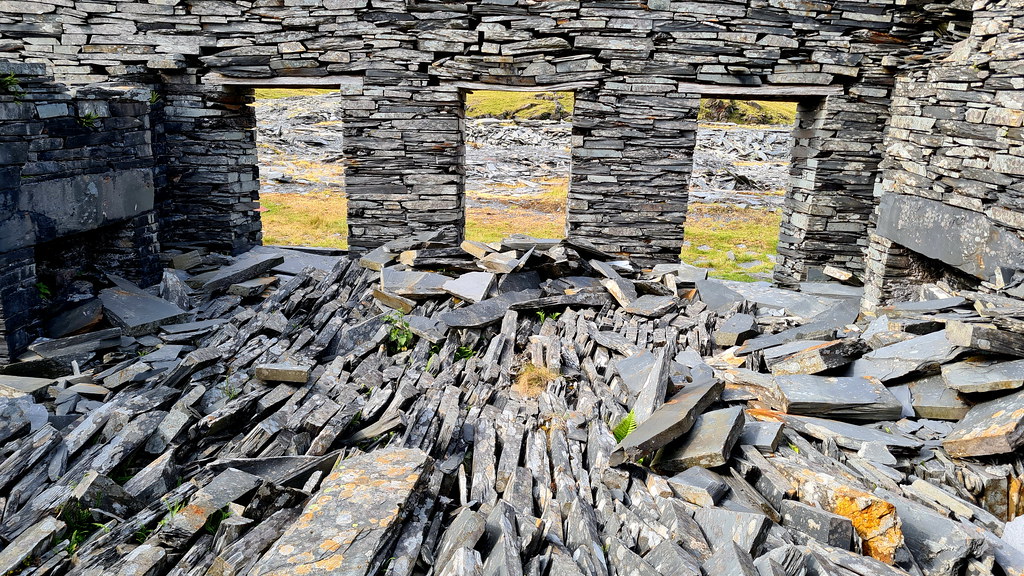
Rusting old engines and chassis:
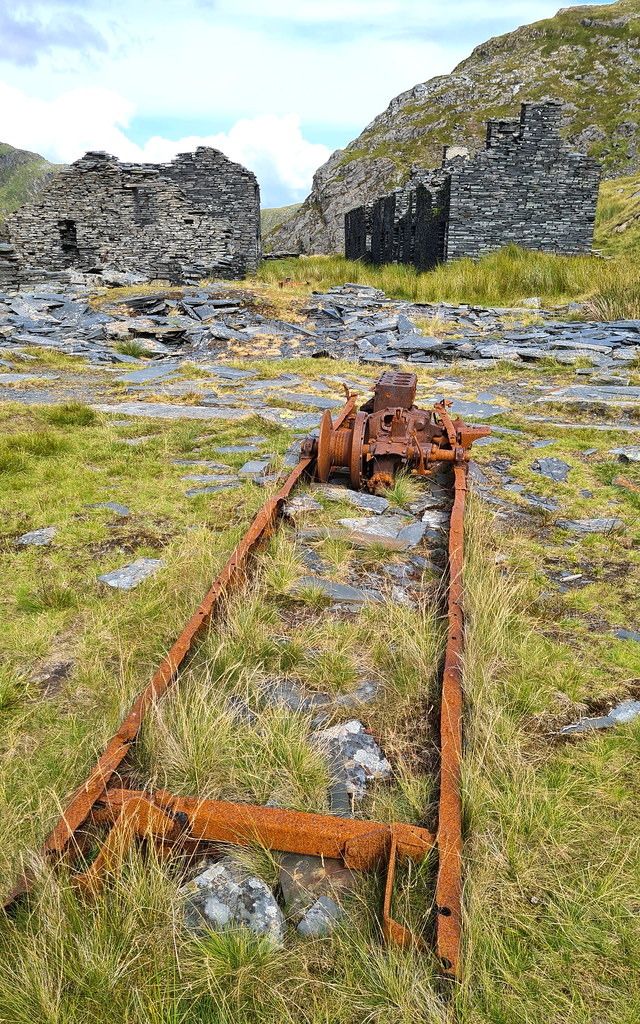
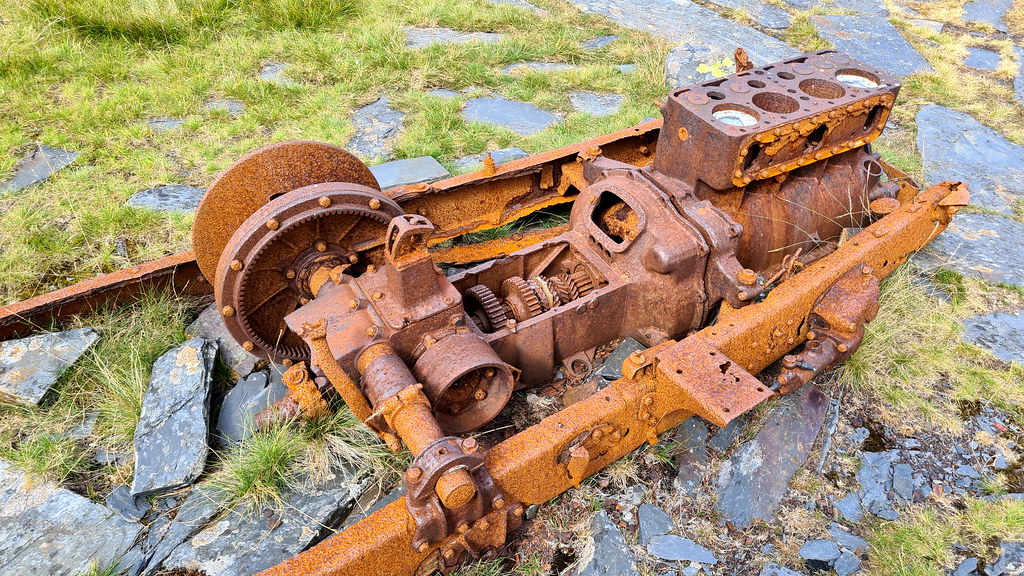
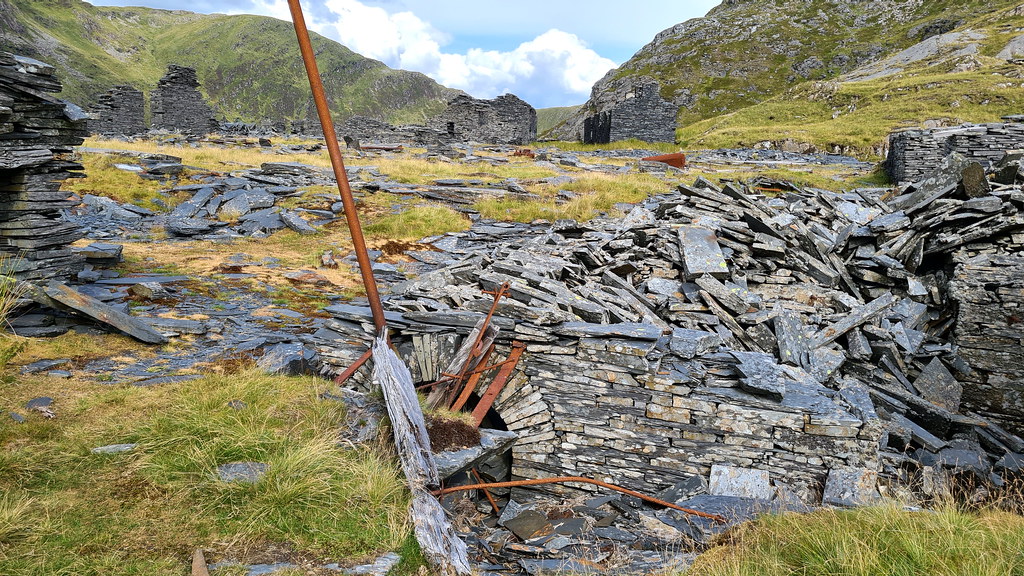
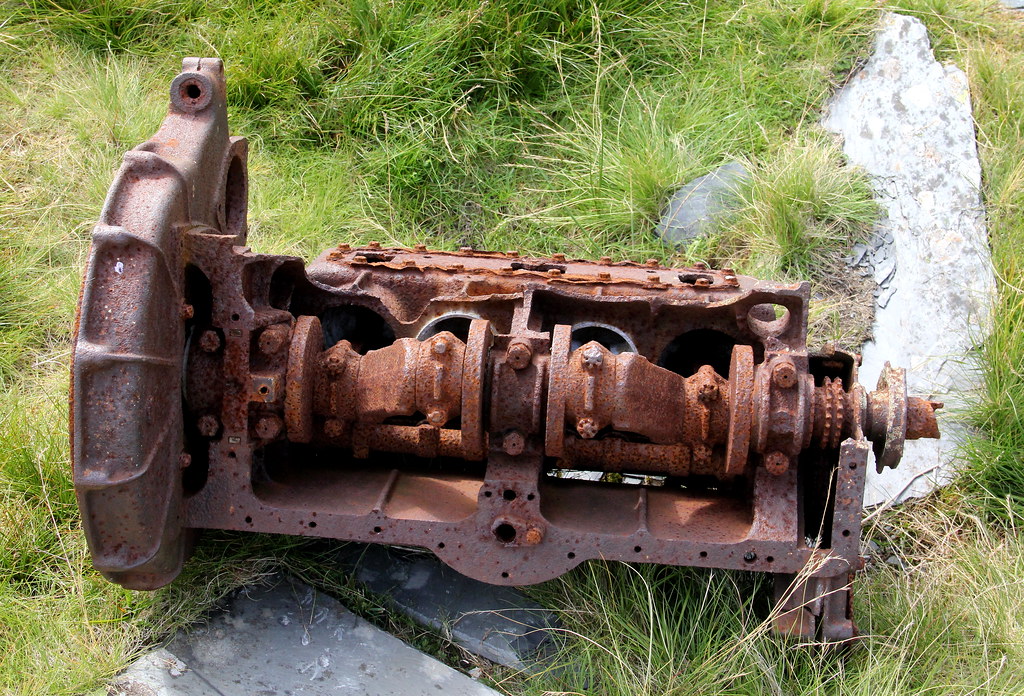
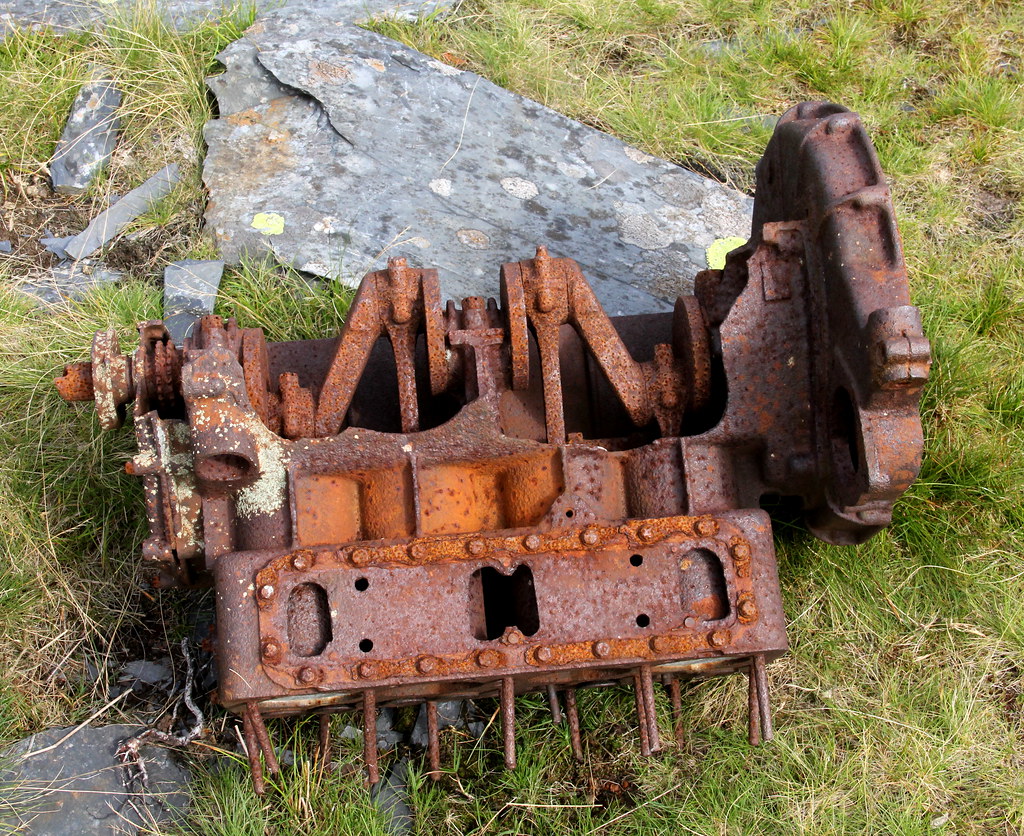
Slate was first discovered at Rhosydd in the early 1830s by two men nearby in Croesor. Assuming it was on the estate of Croesor Fawr, they approached owner, William Turner, to request permission for them to quarry the rock. Around the same time, it was also found by Meredydd Jones of Maenofferen. He assumed that it was on the Cwmorthin Ucha estate, and approached its owner, William Ormsby Gore. Given the boundary between the two estates was ill-defined in this region, a court case in 1833 followed to define the boundary. Small scale working began when Mr Mathews from Aberystwyth obtained a lease, and created the first adit (the now collapsed adit 0) in the 1840s. In 1852, a five-way partnership was established which, in June 1853, became the Rhosydd Slate Company. It was four floors deep, with adits cut at levels 1, 2 and 4 Finished slates were transported by pack horse when quarrying began in 1854 and then onwards by the Ffestiniog Railway. Two years later, in November 1856, the company became a Ltd legal entity. The company was created with a nominal capital of £50,000, and all the shares had been issued by 1862 with most of the money coming from London.
Annotated old O/S map of the quarry showing the quarry in 1919:

Transportation improved in 1864, with the opening of the Croesor Tramway. There were three inclines; two at Garreg Hylldrem, and one at Blaencwm. It included inclines that descended around 750 feet, which represented two of the highest single-pitch inclines in Wales. By this time, slate was being worked on five levels, and there were two adits, one of 500m and a second, the longest at 677m (adit no.9). The latter took eight years to complete. An internal incline was also built downwards from floor 5 with an average gradient of 1:2. The first four wagons descended the incline on 1st August 1864, and for the next few years, production averaged around 200 tons per month. In March 1871, the lease was renewed for a further 42 years, but with adequate returns not forthcoming, the company went into liquidation two years later, in June 1873. A year on, an auction took place in Manchester on 27th June, 1874. The quarry sold for just £29,500 and the new owners established the New Rhosydd Slate Quarry Company Ltd on 10th October, with three-quarters of the initial shares in the new company purchased by local people from Ffestiniog and the surrounding area.
The peak year for the quarry was in 1885, when 6,484 tons of finished slates were produced by the 207 men. The company was successful with good dividends paid to investors between 1876 and 1889. However, profitability declined and then in 1900, a large section of the underground workings collapsed in what was known as the "Great Fall". The huge rock fall destroyed much of the eastern workings but mining continued in the west and on Floors 11, 12 and 13. However, a new quarry was needed and as a result, new workings opened in 1906. The subsequent success of the quarry was curtailed by a slump in the slate trade prior to the First World War, and then by the war itself. The quarry was shut down in 1914 as slate quarrying was deemed to be a "non-essential industry", although two men were retained to maintain it. It reopened after the war, in 1919, but with the company’s finances in a poor state, the company went into voluntary liquidation in July 1921. It was then sold for £23,798 to two members of the Colman family, better known for producing Colman's mustard. Struggling to find markets for their product, Rhosydd closed on September 1930. Again, two caretakers were retained, and the pumps continued to operate, in the hope that it could be reopened.
In December 1947, Captain John S Matthews bought the quarry, together with the Croesor and Conglog quarries, with a view to reopening all three. Sadly his plans went awry, and the pumps were finally turned off in 1948 and the equipment removed for scrap. During its operations, around 222,000 tons of slate were produced, and with the waste tips containing some 2.5 million tons of rock, the yield was approximately 1 ton of slate to 10 tons of wastage. The quarry was purchased by McAlpine in the 1990s, but quarrying was not resumed. Since then it has remained an impressive reminder of this once great industry that dominated North Wales.
2. The Explore
One of my favourite places I went to. It’s remote and a good hour’s walk up here so the place has a real atmosphere to it. Visiting twice, both via detours from a family walk, so time was at a premium. The first visit in July 2021 was more fruitful with the second in January 2022 more brief and in very contrasting weather. It’s quite a hike up from the car-park nearby to Tanygrisiau but the path along the former route of the Croesaur Tramway past Cwmorthin mine and along the western banks of the Cwmorthin Lake is rather wonderful. At the end of the lake the path then heads north-west past the much smaller Conglog slate mine as the vast slate tips of Rhosydd loom up to the left.
After a final steep hike upwards you get to the really impressive northern surface remains. You can quite easily spend half an hour or so here. It’s then five minutes southwards to the legendary adit no.9. It’s a really impressive drive and very straight. In summer the water was well below welly level so I headed down it. Bizarrely, in the distance I could see distant lights which got closer to me. It turned out to be a family of five who were doing the (legendary) Croesor-Rhosydd through trip. Having hit the workings I took some pictures before having to head out to catch the fam up as they trekked back down the path to the car.
The second visit I hoped to go back down the adit but this time (not-unexpectedly) the adit was nearly over welly height and progress was slow, so I gave up as a bad job. Heading further south up the track I came to the now blocked adit no.4 and with the weather closing in, headed back. Hence a revisit here in the future is definitely on the cards.
3. The Pictures
First visit:
First thing of significance are these old miners houses on the edge of Cmworthin Lake:

Looking over towards Cwmorthin mine:


The Rhosydd quarrymaster’s house:


Buildings of Conglog mine:

And one of its remaining adits:

Up we go:

So much slate waste:


Nearly there:

This was an old water-wheel housing:

Looking across to the barracks:

Stacked full of slates:

Rusting old engines and chassis:









